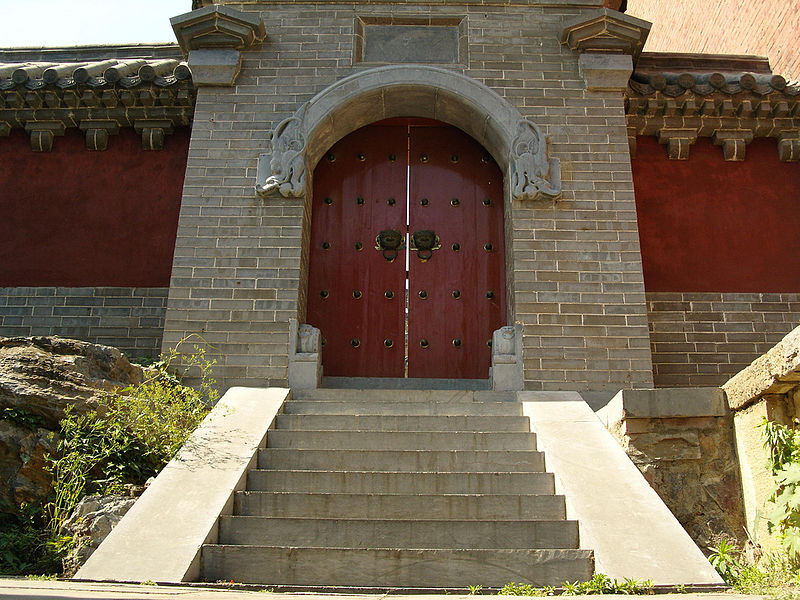





 |
 |
 |
 |
 |
 |
|---|---|---|---|---|---|
 |
|---|
The usual role of nuclear reactors is to produce electricity and heat, but they can do more, such as creating valuable elements by transmutation. They can transmute cheap tungsten into valuable rhenium, osmium, iridium, platinum, and gold. They can make medical isotopes and they can do neutron cancer therapy. They can make neutrons for scientific research. They can make nuclear batteries.
Modern reactors are unconditionally safe and meltdowns are impossible. They have a large array of safety features that old reactors don't. Modern reactors can be designed on a computer.
A reactor that uses fast neutrons can burn all the fuel, and a reactor that uses slow neutrons can only burn 10% of the fuel. Fast neutron reactors minimize radioactive waste.
Burnt fission fuel has valuable rhodium and palladium. The older the burnt fuel, the less radioactive it is, and the easier it is to extract these elements.
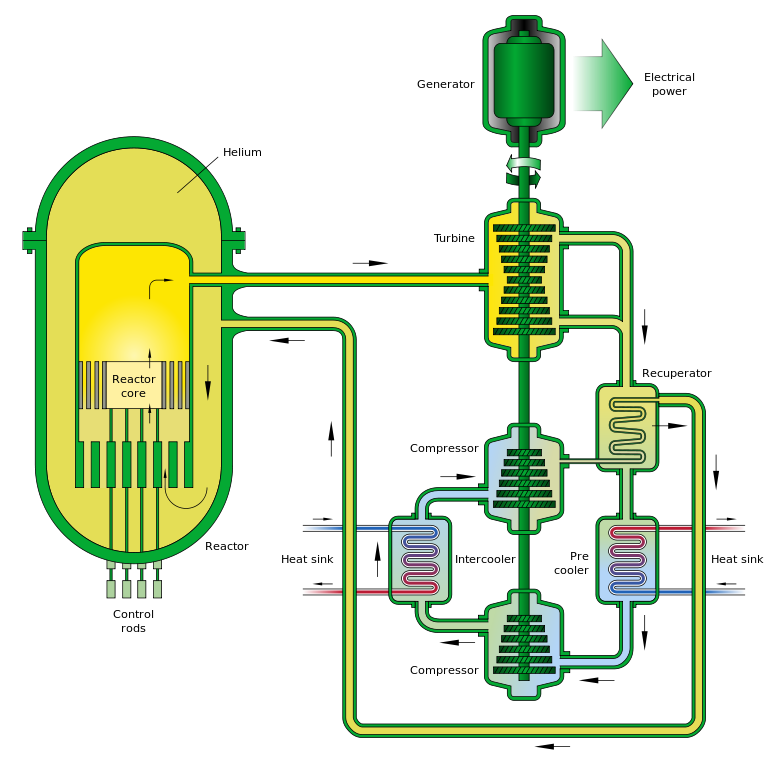 |
|---|
A prime goal of reactor design is maximizing temperature, which maximizes efficiency for producing electricity. Reactors are often used to produce hydrogen, which requires a temperature of 925 Celsius.
There are many designs for generation IV reactors, such as:
Coolant Neutrons Fuel Temperature
cycle Celsius
Dual Fluid Reactor Lead Fast Closed 1000
Very High Temperature Reactor Helium Slow Open 1000 Graphite moderator
Gas-cooled Fast Reactor Helium Fast Closed 850
Lead-cooled Fast Reactor Lead Fast Closed 800
Molten Salt Reactor Salt Either Closed 800
Supercritical Water-cooled Reactor Water Either Either 625
Sodium-cooled Fast Reactor Sodium Fast Closed 550
If all the fuel is burnt then the fuel cycle is "closed", and if not, it's "open".
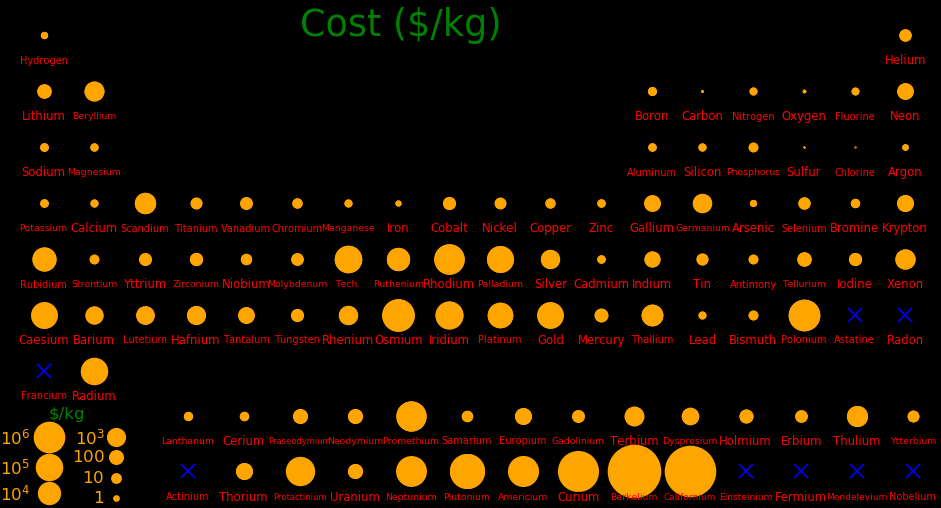 |
|---|
The neutrons in a fission reactor can transmute elements, turning a cheap element into an expensive element. Reactors generate surplus neutrons for free.
Transmutation moves an element one spot to the right on the periodic table. Profitable transmutations are places on the periodic table where a high-value element is to the right of a low-value element. The most profitable transmutation is to turn tungsten into platinum, osmium, iridium, and gold. Another profitable transmutation is turning iodine into xenon.
Transmutation features a target element that is bombarded with neutrons, and the target should have a high neutron capture cross section. Tungsten and iodine qualify.
Molybdenum can capture neutrons and transmute to technetium, ruthenium, rhodium, and palladium, but it works poorly because molybdenum has a low capture cross section.
An example of transmutation is turning tungsten into rhenium. First tungsten absorbs a neutron.
Tungsten-186 + Neutron → Tungsten-187
Then it beta decays to rhenium with a half life of 24 hours.
Tungsten-187 → Rhenium-187 + Electron
Rhenium-187 is stable, and more valuable than tungsten. Adding more neutrons converts rhenium to osmium. The full sequence is
Isotope Neutron capture Value
barns $/kg
Tungsten-186 35 32
Rhenium-187 76.4 1100
Osmium-188 4.7 1600000
Osmium-189 25 1600000
Osmium-190 13.1 1600000
Iridium-191 954 130000
Platinum-192 10.0 35000
Platinum-193 ? 35000 Half life of 50 years
Platinum-194 1.44 35000
Platinum-195 27.5 35000
Platinum-196 .72 35000
Gold-197 98.6 60000
Mercury-198 2.0 50
All isotopes in the sequence are stable except for platinum-192, which is effectable stable for transmutation purposes.
The neutron capture cross sections for tungsten and rhenium are large. Osmium's cross section is smaller, and this is fortunate because osmium is the most expensive element.
There are bottlenecks at platinum-194 and platinum-186, which have low cross sections.
Mercury is cheap, and so gold is the last useful element.
For tungsten, the isotopic abundances are
Abundance Cross section Half life
barn day
tungsten-180 .0012 60 Stable
tungsten-181 0 ? 121
tungsten-182 .265 20.7 Stable
tungtten-183 .143 10.1 Stable
tungsten-184 .307 1.70 Stable
tungsten-185 0 ? 75
tungsten-186 .286 35 .99
When iodine transmutes to xenon, the xenon is easy to extract. It bubbles out.
Isotope Neutron capture Value
barns $/kg
Iodine-127 6.15 35
Xenon-128 8 1800
Xenon-128 21 1800
Xenon-128 26 1800
Xenon-128 85 1800
Xenon-128 .445 1800
Caesium-133 30.3 62000
Barium-134 2 1
The best radioisotopes for power are:
Half life Power/mass Energy Gamma max Formation rate
year Watt/kg MeV MeV barn*year
Europium-152 13.5 1858 1.86 1.408 6005
Europium-155 4.76 705 .252 .147 312
Europium-154 8.59 1.968 1.274 216
Iridium-192 .202 29942 1.460 .613 134
Thulium-170 .352 33150 .968 .083 37.2
Thulium-171 1.91 606 .0968 .968 30.8
Caesium-134 2.06 15300 2.059 .80 21
Silicon-32 153 804 1.92 2.22
Cobalt-60 5.27 19300 2.82 1.33 1.39
Strontium-90 28.9 2234 2.826 .29
Plutonium-238 87.7 578 5.59 5.59 .125
Caesium-137 30.1 583 1.176 .66 -
Radium-226 1599 286 34.958 1.75 -
"Gamma" is the energy of the highest-energy gamma produced.
"Shielding" is the stopping length of the gamma in iridium.
"Formation rate" indicates how fast the isotope is formed in a fission reactor.
For radiation shielding, what matters is the highest-energy gamma produced.
Half life Power/mass Decay Gamma Stopping Formation Decay
energy max length rate
year Watt/kg MeV MeV mm barn*year
Nickel-63 100.1 5.52 .017 .017 .004 2.5 β
Tritium 12.33 315 .0186 .0186 .005 71 β
Samarium-145 .931 .617 .061 .022 EC
Promethium-145 17.7 131 .164 .072 .022 EC
Platinum-193 50 17.5 .057 .076 3.8 EC
Thulium-171 1.91 606 .096 .096 .09 30.8 β
Europium-155 4.76 705 .252 .147 312 β
"Stopping length" is for iridium shielding.
Burnt fission fuel contains valuable palladium and rhodium. One kg of uranium costs $100 and produces $13000 of rhodium and $1600 of palladium. The elements produced by the fission of one kg of U-238 are:
Mass Value of Value of element Half life
element in burnt fuel
gram $/kg $/kg year
Rhodium-103 26.1 500000 13000 Stable
Palladium-106 22.4 72000 1600 Stable
Xenon 44.6 1800 80 Stable A mix of Xenon-131 and Xenon-132
Technetium-99 51.4 ? ? 211000
Strontium-90 11.8 ? ? 28.8
Rhodium and palladium are important as catalysts. Technetium is important because there are no stable isotopes and it doesn't occur in nature. Strontium-90 is important because it can be used as a radioisotope battery. Technetium-99 and Strontium-90 don't have well-established market prices because they only come from fission reactors. Xenon is easy to extract because it's a noble gas.
The numbers are for fission by fast neutrons. Fission by slow neutrons produces similar numbers.
Plutonium fission yields more rhodium and palladium than uranium fission. The fission products are nearly
the same whether fast or slow neutrons are used. The fission products in ppt are:
Half life U-235 U-235 Pu-239 Pu-239 U-238
year slow fast slow fast fast
Rhodium-103 Stable 13.6 14.2 30.0 28.4 26.1
Palladium-106 Stable 3.6 4.2 37.2 36.6 22.4
Xenon Stable 76.7 79.3 84.3 84.9 44.6
Technetium-99 211000 51.6 48.9 51.2 48.2 51.4
China has never shut down a nuclear reactor
Only China and India are engaged in large-scale reactor construction.
Nations that have shut down or aborted a large number of reactors include USA, UK, Germany, Japan, Russia, and Ukraine.
"Constructing" = Under construction
"Shut down" = Previously operational, then shut down
"Aborted" = Construction began but was aborted.
Operational Constructing Shut Aborted Melted
down down
USA 94 2 41 2
France 56 1 12
China 51 20
Russia 38 4 9 19
Japan 33 4 23 3 Fukushima
S Korea 24 4 2
India 20 10 1
Canada 19 6
Ukraine 15 2 3 13 1 Chernobyl
UK 13 2 31 7
Belgium 7 1
Czech Rep 6
Germany 6 30 4
Pakistan 6 1
Finland 4 1
Hungar 4
Slovakia 4 2 3
Argentina 3 1
Brazil 2 1
UAE 1 3
Iran 1 1
Turkey 3
Italy 4 2
N Korea 3 1 3
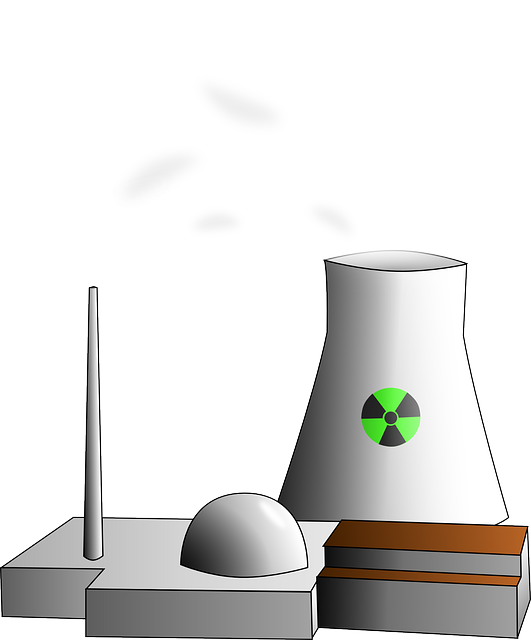 |
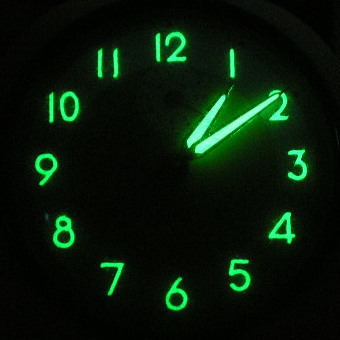 |
 |
|---|---|---|
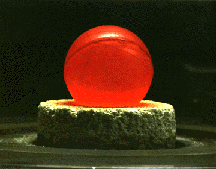 |
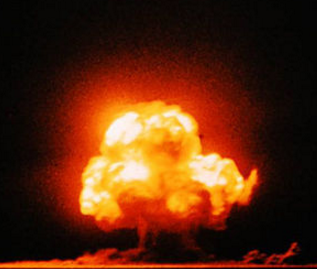 |
 |
 |
 |
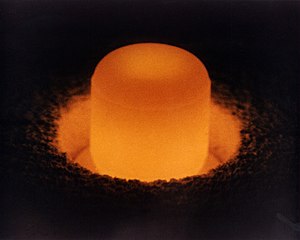 |
|---|---|---|---|---|---|
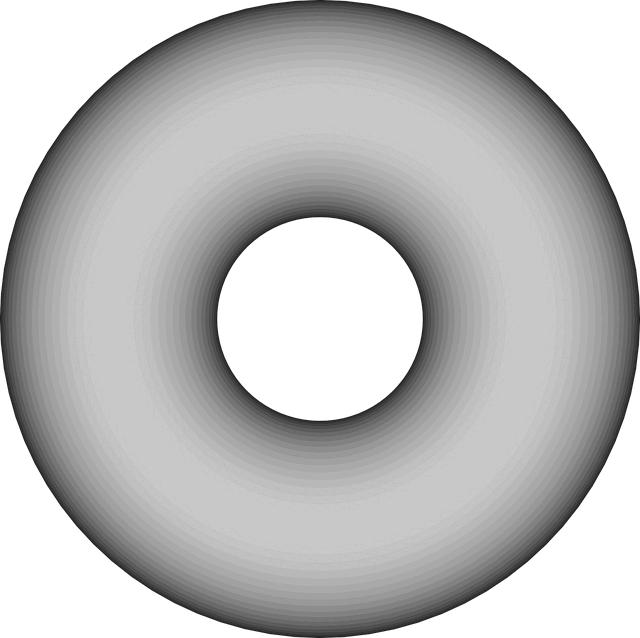 |
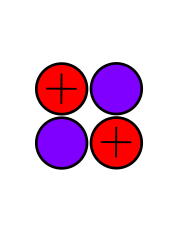 |
 |
|
|---|---|---|---|
Radioisotopes have more energy per mass than gasoline by a factor of 1 million. They can power an aircraft for 50 years and they power the Voyager spacecraft. They can make a fission bomb the size of a softball. Iron Man gadgets are possible with them. Important isotopes include:
Half life (year) Use
Tritium 12.3 Fusion fuel
Helium-3 Stable Fusion fuel. Dilution refrigerator. Fission afterburner rocket
Uranium-235 704000000 Fission fuel. Fission bomb
Plutonium-239 14100 Fission fuel. Fission bomb
Thulium-170 .352 Power
Polonium-210 .379 Power. Alpha rocket
Thorium-228 1.91 Power. Alpha rocket
Thulium-171 1.91 Power. Safe around humans because it requires low radiation shielding
Caesium-134 2.06 Power
Cobalt-60 5.27 Power
Europium-152 13.5 Power
Strontium-90 28.9 Power
Uranium-232 68.9 Power. Alpha rocket
Plutonium-238 87.7 Power. Alpha rocket
Radium-226 1599 Power. Breeder for Thorium-228 and Uranium-232
Lithium-6 Stable Fission afterburner rocket. Fusion bomb
Boron-10 Stable Fission afterburner rocket. Cancer treatment
Beryllium-7 .146 Fission afterburner rocket
Sodium-22 2.602 Fission afterburner rocket
Americium-242m 141 Fission afterburner rocket
Californium-251 900 Fission afterburner rocket. Compact fission bomb. Large neutrons/fission
Californium-252 2.65 Spontaneous fission. Compact fission bomb. Large neutrons/fission
Curium-250 8300 Spontaneous fission
Carbon-12 Stable Isotopically-pure diamonds, nanotubes, and graphene
Carbon-14 5700 Low neutron capture cross section
Iridium-192 .202 Power at high temperature
Tantalum-182 .313 Power at high temperature
Tungsten-181 .332 Power at high temperature
Osmium-194 6.02 Power at high temperature
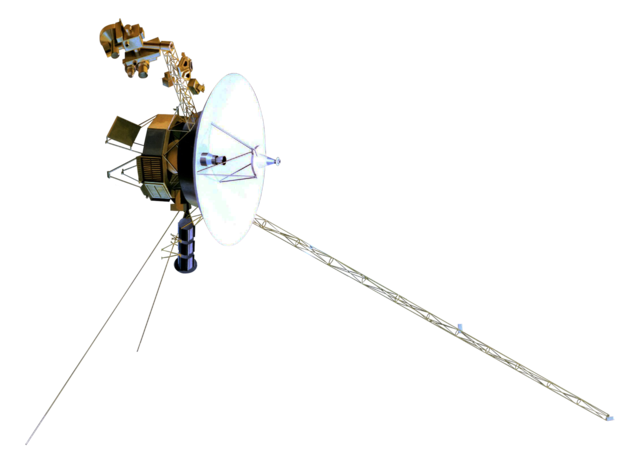 |
 |
|---|---|
Isotope radioactivity can make electricity. The Voyager spacecraft are powered by plutonium-238.
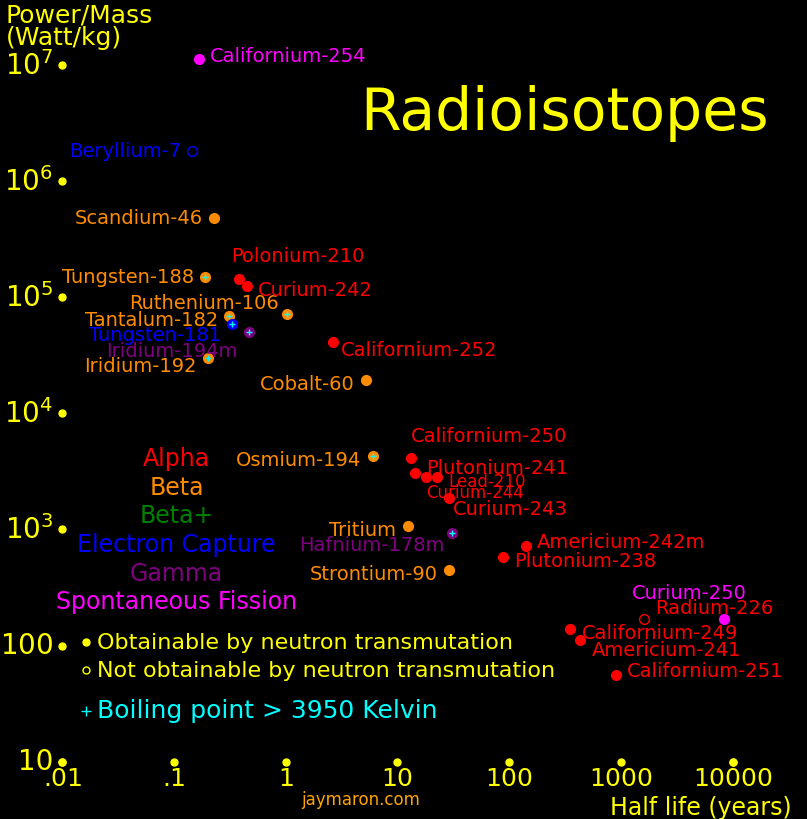 |
|---|
The isotopes with high power/mass are:
Half life Heat Decay Decay Obtainable by
year Watt/kg MeV neutron transmutation
Californium-254 .166 11200000 Fission 207 *
Iridium-192 .202 29942 β 1.460 *
Scandium-46 .229 485000 β 2.366 *
Thulium-170 .352 33150 β .968 *
Thulium-171 1.91 606 β .0965 *
Caesium-134 2.06 15300 β 2.059 *
Californium-252 2.64 41400 α or Fission 12.33 * α 96.9% (6.12 Mev). Fission 3.09% (207 MeV)
Cobalt-60 5.27 19300 β 2.824 *
Europium-154 8.59 3030 β 1.968 *
Tritium 12.33 315 β .0186 *
Europium-152 13.5 1821 β & EC 1.86 *
Strontium-90 28.9 2234 β, &beta 2.826 *
Caesium-137 30.1 583 β 1.176 *
Plutonium-238 87.7 578 α 5.59 *
Americium-242m 141 725 2α 12.33 *
Silicon-32 153 1159 β, β 1.92 *
Iridium-192m 241 72 IT, β 1.615 *
Curium-250 8300 170 Fission 148 * Fission 74%, Alpha 18%, Beta 8%
Beryllium-7 .146 1822000 EC .547
Hafnium-172 1.87 11700 EC 1.835
Sodium-22 2.6 68700 β+ or EC 2.842
Rhodium-101 4.07 9890 EC 1.980
Titanium-44 59.1 4318 EC, β+ 3.798
Thorium-227 .0512 9194000 5α+2β 36.14
Uranium-230 .0554 9280000 6α+2β
Thorium-228 1.912 235000 5α+2β 34.784
Radium-228 5.75 90660 5α+4β 40.198
Actinium-227 21.8 21600 5α+3β 36.18
Uranium-232 68.9 7545 6α+2β 40.79
Radium-226 1599 286 5α+4β 34.958
Thorium-229 7917 57.7 5α+3β 35.366
Protactinium-231 32600 16.2 6α+3β 41.33
Thorium-230 75380 6.78 6α+4β 39.728
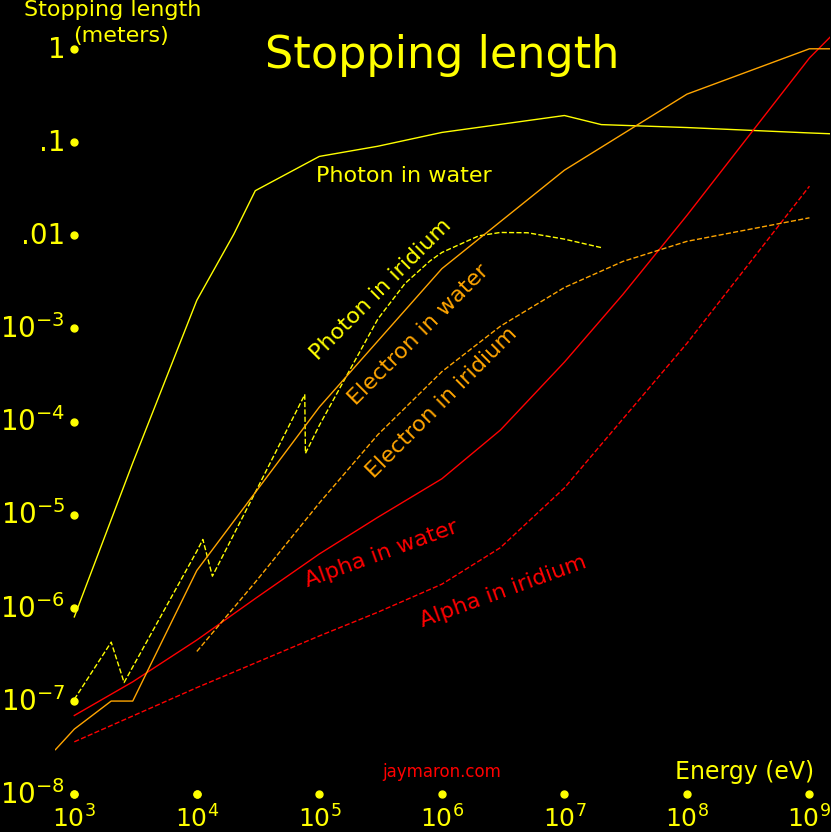 |
|---|
A battery that's around humans needs radiation shielding. Gammas are the most penetrating radiation, so what matters is the highest-energy gamma produced. Alpha and beta decay produce gammas by bremsstrahlung, and a charged particle can give all its energy to one gamma.
The isotopes with low-energy gammas are:
Half life Power/mass Decay Gamma Stopping Formation Obtainable by Decay
energy max length rate neutron
year Watt/kg MeV MeV mm barn*year transmutation
Holmium-163 4570 .00255 .00255 0 EC
Nickel-63 100.1 5.52 .017 .017 .004 2.5 * β
Tritium 12.33 315 .0186 .0186 .005 71 * β
Rubidium-83 .236 .910 .0322 0 EC
Samarium-145 .931 .617 .061 .022 * EC
Tantalum-179 1.82 .110 .065 0 EC
Promethium-145 17.7 131 .164 .072 .022 * EC
Platinum-193 50 17.5 .057 .076 3.81 * EC
Thulium-171 1.91 606 .096 .096 .09 30.8 * β
Europium-155 4.76 705 .252 .147 312 * β
"Gamma" is the energy of the highest-energy gamma produced.
"Stopping length" is the stopping length of the gamma in iridium. The radiation shield should be at least 10 times thicker than the stopping length.
"Formation rate" indicates of how fast it can be produced in a nuclear reactor. See the "Hurdle" section below.
 |
 |
 |
 |
|---|---|---|---|
Isotopes exist with a critical mass smaller than plutonium-239. The smallest critical mass is californium-252 at 2.7 kg. The critical sphere diameter is 6.9 cm, the size of a tennis ball.
Half life Critical Critical Density Fission
mass diameter barn
year kg cm gram/cm3
Californium-252 2.64 2.73 6.9 15.1 33
Californium-251 900 5.46 8.5 15.1 4894
Californium-249 351 6 9 15.1 1666
Curium-247 15700000 7 9.9 13.5 82
Plutonium-239 14100 10 9.9 19.8 748
Uranium-233 159000 15 11 19.1 536
Uranium-235 704000000 52 17 19.1 538
Natural uranium has a critical mass of 800 with heavy water moderator, and 10000 kg with graphite moderator.
 |
|---|
An isotope that sponteously fissions is a neutron source. The easiest such isotope to make is californium-252. The isotopes with a large spontaneous fission rate are:
Fission Decay Neutrons Fission
half life Half life per fraction
years years fission
Mendelevium-260 .0895 .0761 .85
Californium-254 .166 .166 .997
Californium-252 85.7 2.65 3.73 .0309
Curium-250 11200 8300 3.31 .74
 |
|---|
A fission thermal rocket uses a fission reactor to heat hydrogen exhaust. The higher the temperature, the faster the exhaust. The temperature limit is of the order 4000 Kelvin because this is the highest temperature for which solids exist. The material with the highest melting point is hafnium carbide at 4201 Kelvin.
A fission reactor can alternately heat exhaust by generating neutrons, which trigger fission in the exhaust. The neutrons are generated as a pulse and the exhaust is pulsed. The likelihood for a neutron to trigger fission is quantified as a "cross section". The isotopes with the largest fission cross section are:
Half life Fission Energy Quality Neutron capture Obtainable by
year barn MeV output neutron transmutation
Americium-242m 141 7024 195 5640 Daughter nuclei + Neutrons *
Californium-251 900 4894 207 3940 Daughter nuclei + Neutrons *
Curium-245 8500 2161 198 1740 Daughter nuclei + Neutrons *
Plutonium-239 14100 748 189 590 Daughter nuclei + Neutrons *
Uranium-235 704000000 538 181 410 Daughter nuclei + Neutrons *
Beryllium-7 .146 56800 1.644 11670 Lithium-7 + Proton
Sodium-22 2.602 27490 4.14 4948 Neon-22 + Proton
Helium-3 Stable 5333 .764 1020 Tritium + Proton *
Boron-10 Stable 3835 2.34 820 Lithium-7 + Alpha *
Lithium-6 Stable 940 4.783 640 Tritium + Alpha *
Zirconium-88 .228 861000 8 77000 Zirconium-89 + Gammas
Gadolinium-157 Stable 259000 7.94 13020 Gadolinium-158 + Gammas *
Gadolinium Stable 49000 8 2500 Gadolinium-158 + Gammas * Natural composition
An isotope's quality as fission afterburner fuel is
Atomic mass number = M Dimensionless Fission energy = E MeV Fission cross section = A barns Afterburn quality = Q = AE/M
Many superisotopes are actinides. The orange line shows the isotopes can be produced by neutron capture.
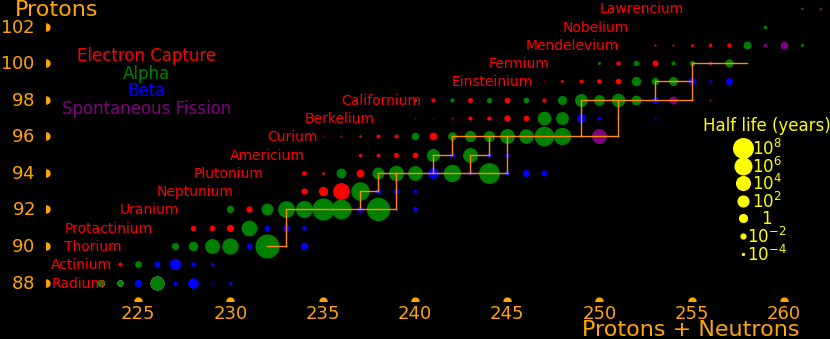 |
|---|
Neutron capture transmutes an isotope one space to the right and beta decay transmutes an isotope one space up. Isotopes on or to the right of orange lines can be made with neutron transmutation and isotopes to the left of the lines can't. Elements that are made by neutron-transmutation tend to be neutron-heavy (neutronic), and elements that can't be made by neutron-transmutation tend to be proton-heavy (protonic).
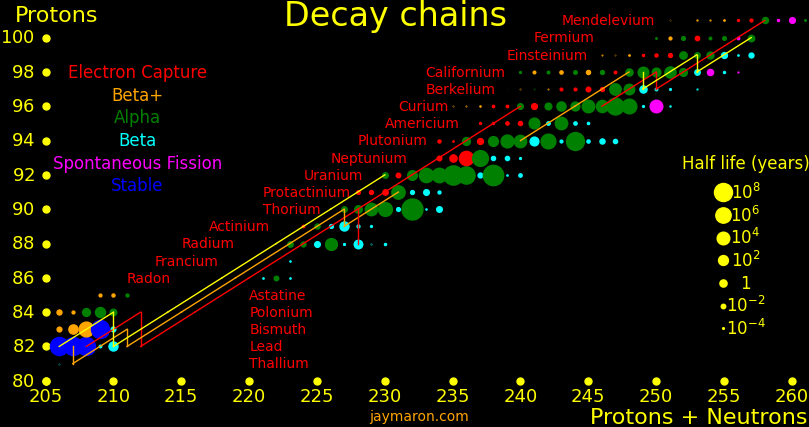 |
|---|
Suburanics are the isotopes from radium to uranium. Many undergo 5 or 6 alpha decays, such as uranium-232. This is the red line in the plot.
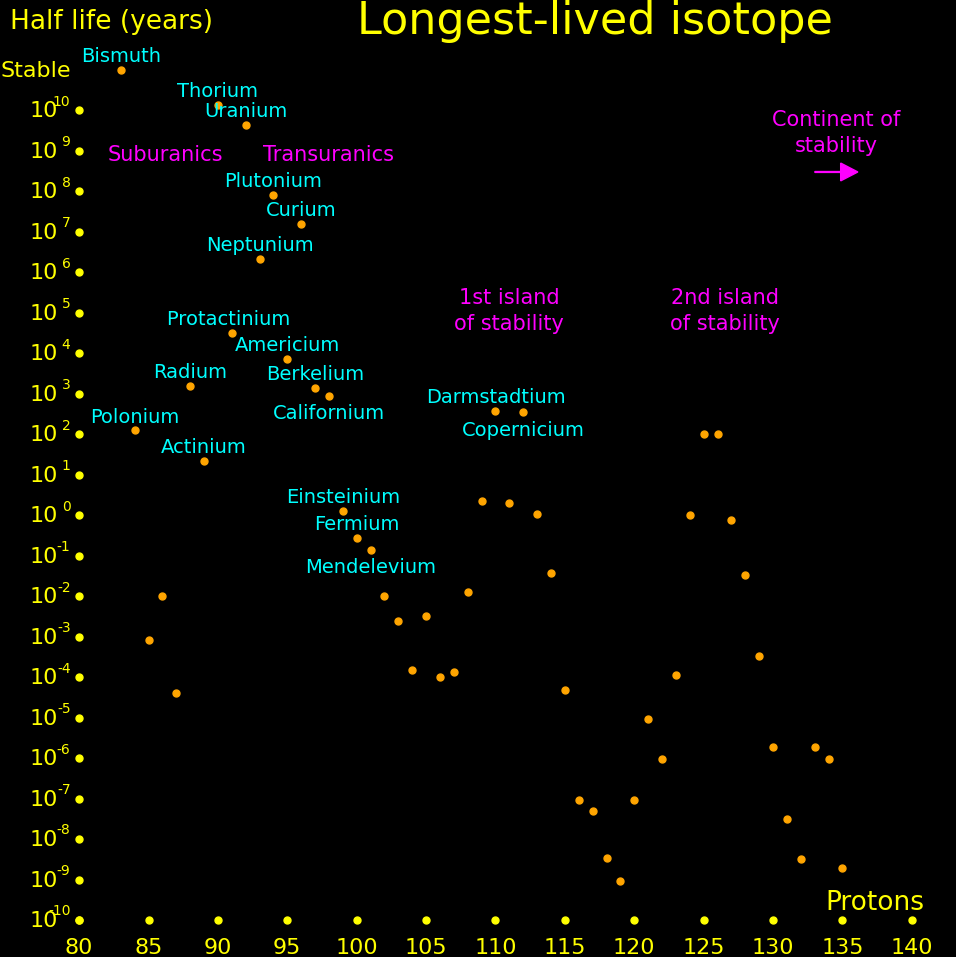 |
|---|
There is a hypothetical "island of stability" around atomic number 112 where isotopes may be long-lived. A second island may exist at atomic number 126.
Experiments can only measure the longest-lived isotope up to a proton number of 105, and beyond that we plot theory. Theoretical half lives are uncertain by an order of magnitude.
 |
|---|
It's possible that for large nucleon number, larger than around 300, that the nucleus transitions to a lower-energy state, called "Up down quark matter", or "udQM". The existence of udQM is unresolved. Theory is uncertain, and it hasn't been experimentally produced. The largest nucleus that's been produced is oganesson-294, with 118 protons and 294 nucleons. It shows no sign of udQM, so if udQM exists, it's beyond oganesson.
If udQM nuclei exist, they could potentially be long-lived. They don't fission because it would take the nucleus to a higher-energy state. They decay by alpha until they're too light to be udQM, at which point they fission.
If udQM nuclei exist, then there may exist long-lived elements from Z=140 to way beyond. These are "continental elements".
The largest nucleus that standard nuclear matter can make has Z=140. Larger nuclei fission instantly. The only way that nuclei with Z>140 can exist is if udQM exists.
Typical energies:
MeV MeV/Nucleon
Chemical reaction .000002 Varies
Beta decay 2 Varies
Alpha decay 6 .026
Superalpha decay 36 .16 5 or 6 alphas, in sequence. For example, Uranium-232
Superheavy decay 280 .98 Alpha, then fission. Superheavy elements with more than 108 protons
Neutron capture 8 Varies
Fission (Helium-3) .764 .19
Fission (Lithium-6) 4.783 .68
Fission (Beryllium-7) 1.64 .21
Fission (Boron-10) 2.34 .21
Fission (Uranium-235) 181 .77
Fission (Plutonium-239) 189 .79
Fission (Californium-252) 207 .82
Fusion of D+Li6 22.4 2.8
Beta decay, Beryllium-7 .547 .078
Beta decay, Sodium-22 2.842 .13
Beta decay, Scandium-46 2.366 .051
Beta decay, Cobalt-60 2.82 .047
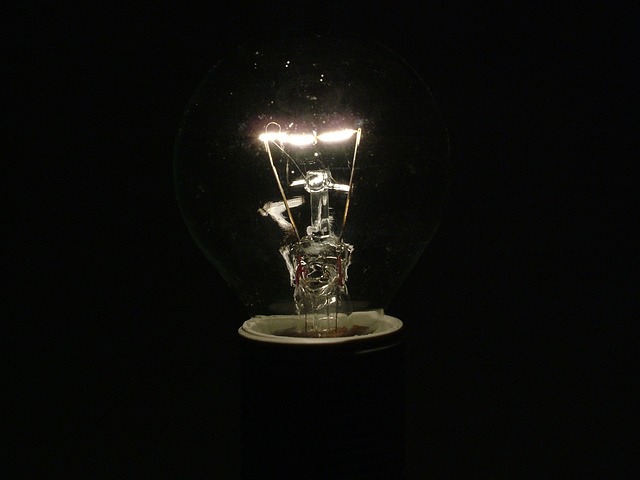 |
|---|
Half life Heat Decay Decay energy Melt Boil Obtainable by Formation rate
year Watt/kg MeV Kelvin Kelvin neutron transmutation
Tungsten-188 .191 148700 2β .349 3695 6203 * .173
Iridium-192 .202 * 193
Tantalum-182 .313 68866 β 1.814 3290 5731 * 6.42
Tungsten-181 .332 59200 EC 1.732 3695 6203 * .0239
Ruthenium-106 1.023 71200 2β 3.584 2607 4423 * .000198
Hafnium-172 1.87 11700 EC 1.835 2506 4876
Thorium-228 1.912 235000 5α+2β 34.784 2023 5061
Rhodium-101 4.07 9890 EC 1.980 2237 3968
Cobalt-60 5.27 19300 β 2.82 1768 3200 * 2.01
Osmium-194 6.02 4313 2β 2.33 3306 5285 * .130
Platinum-193 50 17.5 EC .057 2041 4098 * 3.81
Titanium-44 59.1 4318 EC & β+ 3.798 1941 3560
Uranium-232 68.9 7545 6α 40.79 1405 4404
Iridium-192m2 241 72 * 100
Thorium-229 7917 57.7 5α+3β 35.366 2023 5061
Protactinium-231 32600 16.2 6α+3β 41.33 1841 4300
Europium-152 13.5 8660
Europium-154 8.59 312
Europium-155 4.76 312
Meitnerium-285 2.24 1020000 α+fission 220 ~3300 ~5000
Darmstadtium-293 37.7 58900 β+fission 220 ~2600 ~4700
Darmstadtium-292 133 16700 α+fission 220 ~2600 ~4700
Darmstadtium-294 380 5820 α+fission 220 ~2600 ~4700
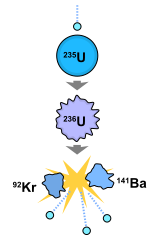 |
|---|
Half life Fission Fission Critical mass
year barn neutrons kg
Fermium-257 .275 2100 5.7
Einsteinium-254 .75 2900 4.2 9.9
Californium-251 900 4801 4.1 5.46
Californium-249 351 600 4.06 6.0
Curium-245 8500 2161 3.83 9.6
Americium-242m 141 7024 3.26 9.5
Plutonium-239 14100 748 2.89 10
Uranium-235 704000000 538 2.43 52
The transmutation options are:
Example Means
Add a neutron Uranium-238 → Uranium-239 Slow neutrons from fission. Thermal neutrons at 300 Kelvin and .025 eV
Subtract a neutron Thorium-232 → Thorium-231 Superfast neutrons from fusion. Neutron energy = 14.1 MeV
Beta decay Uranium-239 → Plutonium-239 Patience
Alpha decay Uranium-233 → Thorium-229 Patience
Fission Uranium-235 → Daughter nuclei + Neutrons
Accelerator substitution Lithium-6 + Deuteron → Beryllium-7 + Neutron
Accelerator fusion Berkellium-249 + Calcium-48 -> Tennessine-297
Some isotopes can be made with present technology and some need future technology. Also, the more energy you have, the more isotopes you can make.
Fission reactors are the easiest way to make isotopes. They produce slow neutrons that are captured by a target nucleus and they make isotopes that are "neutron heavy", or "neutronic".
Slow neutrons tend to stick to nuclei and superfast neutrons tend to eject neutrons from nuclei. Superfast neutrons can make protonic isotopes. Superfast neutrons are produced by fusion:
Deuterium + Tritium → Helium-4 (3.5 MeV) + Neutron (14.1 MeV)
Most isotopes can be made with slow or superfast neutrons. Many that can't can be made with accelerator substitution. A target nucleus is bombarded with high-energy particles such as deuterons, tritons, alphas, and He-3. For example,
Lithium-6 + Deuteron + 2 MeV → Beryllium-7 + Neutron
Isotopes can be made by fission, for example rhodium-103 and palladium-106. Rhodium and palladium are valuable catalysts.
Isotopes can be made by spallation, where a high-energy particle blasts nucleons off a nucleus.
Isotopes can be made by fusion, where 2 nuclei are collided at the resonance energy for fusion. This is how isotopes far beyond uranium are made.
Isotopes can be made by alpha decay. For example, slow neutrons turn thorium-232 into uranium-233, and then uranium-233 alpha decays to suburanics.
Slow neutrons tend to stick to nuclei and superfast neutrons tend to eject neutrons from nuclei. Superfast neutrons can make protonic isotopes. Superfast neutrons are produced by fusion:
Deuterium + Tritium → Helium-4 (3.5 MeV) + Neutron (14.1 MeV)
The cross sections for a fusion neutron hitting thorium-232 are (in barns):
Fusion neutrons Fission neutrons Thermal neutrons Energy threshold
14.1 MeV 2.4 MeV average .025 eV average MeV
Capture the neutron .0011 .096 7.299 0
Eject 1 neutron 1.786 .017 0 6.468
Eject 2 neutrons .522 .000072 0 11.61
Eject 3 neutrons 0 0 0 18.43
Fission .361 .080 .000054 0
Elastic collision 2.740 4.832 14.72 0
Inelastic collision .468 2.690 0 .0496
Total 5.859 7.717 22.02
For fusion neutrons, ejection is half the cross section.
Protonic isotopes can be produced by bombarding a target nucleus with a high-energy particle, such as a proton, deuteron, triton, He-3, or Alpha.
Beryllium-7 can't be made with fission or fusion neutrons, but it can be made by bombarding Lithium-6 with high-energy deuterons.
Target New High-energy Energy Cross section nucleus nucleus particle MeV barn Li6 Be7 d 2 .2 Mg24 Na22 d 7 .2 Th232 Ac227 t 75 .5 Th232 Ra228 t 100 .0018 Th232 Th228 d 83 .272 Th232 U-232 Alpha 38 .195 Th232 Ac225 p 150 .015 Th232 Ac226 p 150 .015 Th232 Ac227 p 150 .015 Th232 Th227 p 70 .040 Th232 Th228 p 60 .085
Suburanics can be made with a combination neutron addition and subtraction. Starting with thorium-232,
Th-232 → Th-231 → Th-230 → Th-229 → Th228
Th-232 → Th-233 → U-233 → U-232 → U-231 → U-230
Radium can be made by waiting for a thorium alpha decay.
Input Input half life Output Output half life
year
Thorium-230 75380 Radium-226 1599
Thorium-232 14000000000 Radium-228 5.75
Uranium-235 704000000 Protactinium-231 32600
Uranium-238 4470000000 Thorium-230 75380
Radium-226 can generate all the important suburanics with fission neutrons except for Uranium-230. The sequence is:
Radium-226 → Actinium-227 → Thorium-227 → Thorium-228 → Thorium-229 → Thorium-230 → Protactinium-231 → Uranium-232
Neutron capture is slow. Some isotopes need a high neutron flux. A prime goal is maximizing neutron density, and a future civilizations will have neutron densities than today.
The neutron capture rate is:
Neutron density = D = e16 neutrons/meter3 Typical for a fission reactor Neutron speed = V = 2190 meter/second Thermal neutron at 300 Kelvin Neutron flux = F = D V =2.2e19 neutrons/meter2/second Typical for a fission reactor Neutron capture cross section = A = e-28 meter2 = 1 barn Typical cross section Transmutation time = T = (DVA)-1 = 4.6e8 seconds = 14 years
Many isotopes need a small transmutation time. This can be done by increasing the neutron flux or by increasing the capture cross section. The slower the neutron, the larger the cross section.
For neutrons below 100 eV, it's often the case that "VA" is constant as a function of V.
At Oak Ridge National Laboratory, the High Flux Isotope Reactor has a flux of 2.5e19 neutrons/meter2/second.
The Oak Ridge Spallation Source produces neutron pulses with e21 neutrons/meter2/second.
Neutrons are made by hitting beryllium-9 with high-energy alphas. The alpha source is often polonium-210.
Beryllium-9 + &alpha → Carbon-12 + Neutron
Continuous flux Pulse flux Continuous power
Neutron/meter2/s Neutron/meter2/s MWatt
Supernova - e36 e30 neutrons/meter3
Fission bomb e28
Oak Ridge fission reactor 2.5e19 - 75
Oak Ridge spallation source 3e18 2e21 1.4
ITER fusion reactor 2e18 - 500
Stellar S process e15
Californium-252 e13
Polonium-210 + Beryllium-9 e12 - Polonium-210 half life = .379 years
Fusor e9 - Use high voltage to fuse D+T
Radium-226 + Beryllium-9 e8 - Radium-226 half life = 1599 years
Earth surface .0065
Deep underground e-9
In many cases, the slower the neutron, the higher the capture cross section.
 |
|---|
Solid lines are scattering cross sections and dotted lines are capture cross sections.
Kelvin
Water melt 273
CO2 sublime 195
Argon boil 87
Nitrogen boil 77
Neon boil 27
Hydrogen boil 21
Helium-4 boil 4.2
Helium-3 boil 3.2
Helium-3 evaporative cooling .3
Dilution refrigerator .002 Uses helium-3 and helium-4
Nuclear demagnetization, typical .000001
Laser cooling, typical .000001
Nuclear demagnetization, record low .0000000001
Laser cooling, record low .000000000038
Cold neutrons bounce off walls. The critical temperature for various materials is:
Neutron Neutron Neutron
temperature temperature speed
neV Kelvin meter/second
Nickel-58 335 .0039 8.14
Diamond 304 .0036 7.65
BeO 261 .0031 6.99
Nickel 252 .0030 6.84
Beryllium 252 .0030 6.84
Graphite 180 .0021 5.47
This is within reach of a dilution refrigerator, which can reach .002 Kelvin. It's also within reach of magnetic trapping.
An advanced civilization will have unlimited helium-3 and can make a large dilution refrigerator. It can make a neutron wall trap that can collect all the outgoing neutrons from a fission reactor and funnel them to a focus. The only limit on neutron density is neutron degeneracy, which is 1022 neutrons/meter3 at .003 Kelvin.
Ultracold neutrons can be trapped magnetically. Neutrons have a magnetic moment of 50 neV/Tesla. For a 3 Tesla field, this is the same temperature range as a dilution refrigerator and as for wall trapping.
Magnetic fied (Tesla)
Neodymium magnet 1.25
Magnetic resonance imaging 7
Superconducting magnet max, continuous operation 32
Resistive magnet max, continuous operation 38
Pulsed magnet max, non-destructive 100
Pulsed magnet max, destructive 2000
White dwarf 1000
Neutron star 10000000
Magnetar 10000000000
Magnetar max 100000000000
Neutron density is limited by degenercy pressure. For neutrons,
Type Energy Temperature Wavelength Speed Degenerate density
eV Kelvin Angstroms Meter/second #/meter3
Fusion 14100000 .000061 51900000
Fast 2000000 .00016 19600000
Thermal .0253 294 1.45 2200 3.3⋅1029
Cold .00036 4.2 12.1 263 5.6⋅1026
Ultracold .00000022 .0025 497 6.4 8.1⋅1021
Fast neutrons are from fission.
Fusion neutrons are from the fusion of D+T->He4+n, which produces a 14.1 MeV neutron.
 |
|---|
Half life Neutron capture (barns)
Osmium-192 Stable 3.12 Input isotope
Osmium-193 1.25 days 38.0 Hurdle isotope
Osmium-194 6.0 years .043 Output isotope
If there is a hurdle isotope, the formation rate of the output isotope is proportional to:
Hurdle half life = T Hurdle neutron capture cross section = σc Hurdle fission cross section = σf Natural fraction = F Fraction of the natural element that can transform to the output isotope Capture fraction = C = σc/(σc+σf) Formation rate of output isotope = Q = T σc F C
This is for the case of an output isotope with a long half life and a hurdle isotope with a short half life.
If the output isotope has a short half life, then the output isotope is the hurdle. "T" becomes the half life of the output isotope and σc becomes the capture cross section for the isotope preceeding the output isotope.
If the hurdle time is more than 1 year, we use a time of 1 year.
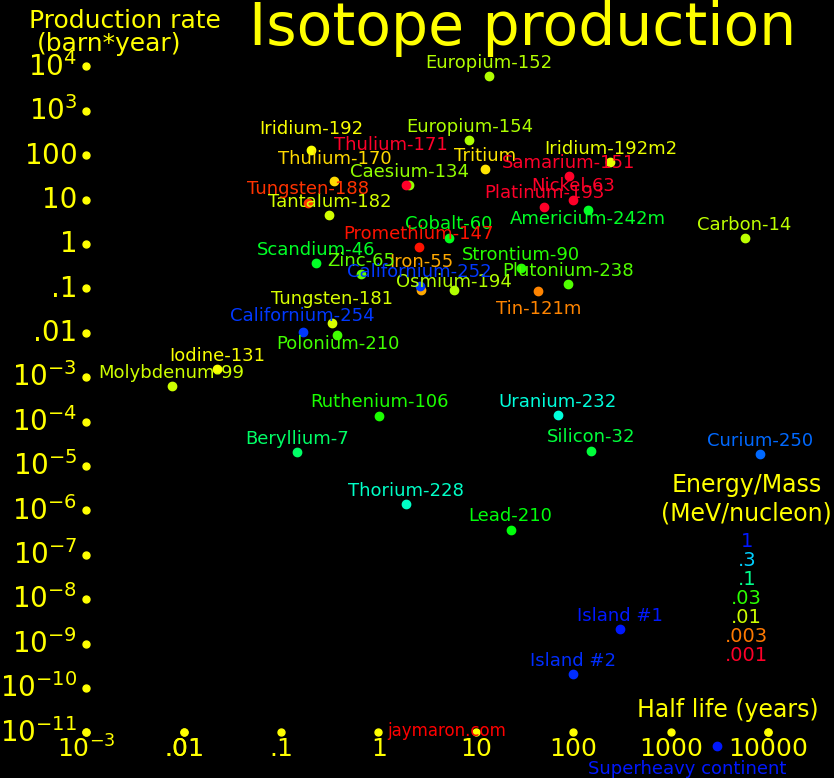 |
|---|
In the plot, "Island #1 and #2" are the nuclear islands of stability. Island #1 needs a formation time of order .1 seconds, and island #2 needs .01 seconds, and superheavy isotopes (udQM regime) need .001 seconds.
The isotopes with hurdles to their formation are:
Output Output Hurdle Capture Natural Capture Production Hurdle
Half life half life rate
year year barn fraction fraction barn*year
Europium-152 13.5 13.5 9100 .952 1 8660 Europium-151
Europium-154 8.59 8.59 312 1 1 312 Europium-153
Europium-155 4.76 4.76 312 1 1 312 Europium-153
Iridium-192 .202 .202 954 1 1 193 Iridium-192
Iridium-192m2 241 241 100 1 1 100 Iridium-192m2
Tritium 12.3 Stable 940 .0759 1 71 Lithium-6
Thulium-170 .352 .352 105.6 1 1 37.2 Thulium-170
Thulium-171 1.91 .352 87.6 1 1 30.8 Thulium-170
Caesium-134 2.06 2.06 30.3 1 1 30.3 Caesium-137
Americium-242m 141 141 84 1 .10 8.4 Americium-242m
Tantalum-182 .313 .313 20.5 1 1 6.42 Tantalum-182
Platinum-193 50 Stable 10.0 .381 1 3.81 Platinum-192
Cobalt-60 5.27 5.27 2.007 1 1 2.007 Cobalt-60
Carbon-14 5730 Stable 1.931 .996 1 1.92 Nitrogen-14
Plutonium-238 87.7 2144000 171 .0072 .146 1.23 Neptunium-237
Argon-39 269 Stable .8 1 1 .8 Argon-38
Cadmium-109 1.26 Stable 1.1 .518 1 .57 Cadmium-108
Scandium-46 .229 .229 2.366 1 1 .542 Scandium-46
Iron-55 2.737 2.737 2.25 .0585 1 .36 Iron-55
Deuterium Stable Stable .333 .99985 1 .333 Proton
Zinc-65 .667 .667 .93 .492 1 .305 Zinc-65
Tungsten-188 .191 .00270 64.1 1 1 .173 Tungsten-187
Californium-252 2.64 2.64 2.49 1 .0673 .168 Curium-248
Osmium-194 6.0 .00343 38.04 1 1 .130 Osmium-193
Technetium-99 211000 211000 .132 .903 1 .119 Technetium-99
Strontium-90 28.9 .138 .420 1 1 .0580 Strontium-89
Tungsten-181 .332 .332 60 .0012 1 .0239 Tungsten-181
Promethium-145 17.7 .931 .7 .0308 1 .022 Samarium-145
Samarium-145 .931 .931 .7 .0308 1 .022 Samarium-145
Californium-254 .166 .049 20.0 1 .0151 .0148 Californium-253 1303
Polonium-210 .379 .379 .0338 1 1 .0128 Polonium-210
Iodine-131 .0220 Stable .29 .341 1 .00218 Tellurium-130
Ruthenium-106 1.023 .000507 .390 1 1 .000198 Ruthenium-105
Argon-42 32.9 .000208 .509 1 1 .000106 Argon-41
Silicon-32 153 .000299 .107 1 1 .000032 Silicon-31
Curium-250 8300 .000122 1.60 1 .138 .0000027 Curium-249 10
Lead-210 22.3 .000371 .00143 1 1 .00000053 Lead-209
Caesium-137 30.2 .0360 Unknown 1 1 Caesium-136
Output Output Hurdle Capture Natural Capture Production Hurdle
Half life half life rate
year year barn fraction fraction barn*year
Einsteinium-257 .0211 .000048 Unknown Unknown Einsteinium-256
Einsteinium-259 .0180 .000074 Unknown Unknown Einsteinium-258
Fermium-257 .275 .000300 Unknown Unknown Fermium-256
Subjecting natural europium to neutrons for a short time produces mostly europium-152.
Subjecting natural europium to neutrons for a medium time produces mostly europium-154.
Subjecting natural europium to neutrons for a long time produces 2/3 europium-154 and 1/3 europium-155.
Half life Neutron capture Natural Energy Gamma max Decay
year barn fraction MeV MeV
Europium-151 Stable 9100 .478 - -
Europium-152 13.5 11800 0 1.86 1.408
Europium-153 Stable 312 .522 - -
Europium-154 8.59 1663 0 1.968 1.274
Europium-155 4.76 3843 0 .252 .147
Europium-156 .0416 100 0
Europium-157 .00174 0
Thulium-169 Stable 105.6 1 -
Thulium-170 .352 87.6 0 .968 β
Thulium-171 1.91 9.90 0 .096 β
Promethium-143 .725 3.07 0 β+
Promethium-144 .994 15.09 0 β+
Promethium-145 17.7 5.28 0 .164 .072 EC
Promethium-146 5.53 8.41 0 1.495 1.189 EC
Promethium-147 2.623 167.2 0 .224 .224 Β 72 barn to Pm-148m. 82 barns to Pm-148
Promethium-148 .0147 0 β
Promethium-148m .113 0 β
Neodymium-142 Stable 18.7 .272
Neodymium-143 Stable 337 .112
Neodymium-144 Stable 3.6 .238
Neodymium-145 Stable 42 .0829
Neodymium-146 Stable 1.4 .172
Neodymium-147 .0301 142.9 0 β
Neodymium-148 Stable .0575
Neodymium-149 .000194 0 β
Neodymium-150 Stable .0563
Samarium-144 Stable .7 .0308
Samarium-145 .931 280.3 0 .617 .061 EC
Samarium-146 68000000 .382 0
Samarium-147 Stable 57 .150
Samarium-148 Stable 24 .112
Samarium-149 Stable 42080 .138
Samarium-150 Stable 104 .0737
Samarium-151 90 14070 0
Samarium-152 Stable 206 .267
Samarium-153 .00528 0
Samarium-154 Stable 8.4 .227
Making transuranics takes many neutrons. Also, fission can halt the process. When going from uranium-238 to californium-251, the fraction of isotopes that make it to californium-251 is .0000151.
There are no hurdles with short half lives until fermium-258, with a half life of .000370 seconds.
The sequence for making transuranics is:
Half life Fission Capture Capture Cumulative Decay
year barn barn fraction fraction
Uranium-238 4470000000 .000010 2.68 1 1 α
Plutonium-239 14100 748 1017 .58 .58 α
Plutonium-240 6561 .030 290 1 .58 α
Plutonium-241 14.3 937 363 .28 .16 β
Plutonium-242 373000 .0026 18.5 1 .16 α
Americium-243 7370 .2 75.3 1 .16 α
Curium-244 18.1 1.1 13 .92 .16 α
Curium-245 8500 2161 383 .151 .147 α
Curium-246 4730 .17 1.36 .89 .0222 α
Curium-247 15700000 82 58 .41 .0198 α
Curium-248 340000 .34 2.49 .88 .00811 α
Californium-249 351 1666 483 .22 .00714 α
Californium-250 13.08 112 1701 .94 .00157 α
Californium-251 900 4894 2849 .37 .00148 α
Californium-252 2.64 33.0 20.4 .38 .000546 α
Californium-253 .049 1303 19.95 .0151 β
Californium-254 .166 2.001 4.51 .69 Fission
Einsteinium-255 .109 .503 55.4 1 β
Fermium-256 .000300 Unknown Unknown Unknown α
Fermium-257 .275 2951 3.003 .00102 α
Fermium-258 .000370 Unknown Unknown Unknown Fission
Fermium-259 1.5 Unknown Unknown Unknown Fission
Fermium-260 .004 Unknown Unknown Unknown Fission
A neutron could either be captured or it could trigger fission. "Capture fraction" is the fraction of capture events.
"Cumulative fraction' is the product of capture fractions up to the given isotope.
Energy per neutron = E = 200 MeV/neutron Neutron mass = M = 1.67e-27 kg Neutron energy/mass = e = E/M = 1.9e16 Joule/kg Electricity energy/$ = L = 30 MJoule/$ Neutron price/kg = P = e/L = 640 M$/kg
A neutron can turn uranium-238 into plutonium-239. The energy cost of plutonium-239 is 2.7 M$/kg.
Actinides beyond plutonium take many neutrons to make. It takes 14 neutrons to get from uranium-238 to californium-252.
A calutron separates isotopes with a magnetic field.
Protons Price/kg World produce America stockpile Natural fraction
M$/kg kg/year kg
1 Hydrogen-2 .004 1000000 .00015
1 Hydrogen-3 30 10 30 0
2 Helium-3 1 10 30 .000002
2 Helium .000024 50000000
3 Lithium .000070 36000000
3 Lithium-6 .06 .0759
4 Beryllium .00150 425000 All beryllium-9
4 Beryllium-7 0
5 Boron-10 .20
6 Carbon-12 .12 .989
6 Carbon-14 .000000000001
21 Scandium-46
27 Cobalt-60
38 Strontium-90 .01
55 Caesium-137
63 Europium-152
63 Europium-154
77 Iridium-192
77 Iridium-192m
84 Polonium-209 50000000
84 Polonium-210
88 Radium-226 .1 0 30
88 Radium-228 .1 0 30
89 Actinium-227 1
90 Thorium .000290 10000000
90 Thorium-228
90 Thorium-229
90 Thorium-230
90 Thorium-231
91 Protactinium-231 .28
92 Uranium .000101 70000000
92 Uranium-230
92 Uranium-232
92 Uranium-233 2000
92 Uranium-235 .1 480000 .0072
93 Neptunium-237 .66
94 Plutonium-238
94 Plutonium-239 6.5 80000
95 Americium-141 .7 10
95 Americium-142m
95 Americium-143 .7 10
95 Curium-242 1 10
95 Curium-243
95 Curium-244 185 .17 10
95 Curium-245
95 Curium-246
95 Curium-247 .1
95 Curium-248 160000 .0001
96 Curium-250
97 Berkelium-249 185000 .020 N/A
98 Californium-249 185000 .0005
98 Californium-250
98 Californium-251
98 Californium-252 60000 .5 N/A
99 Einsteinium-253 .01 N/A
99 Einsteinium-254 .000001 N/A
100 Fermium-257
Power Power Distance
Watts Sun=1 light year
Human civilization, 1800 6.0e11
Human civilization, 1900 1.3e12
Human civilization, 2023 2.0e13
Solar power hitting Earth 1.7e17
Sun 3.8e26 1 0
Star Sirius 9.7e27 25.4 8.6
Star Aldebaran 2.0e29 520 65
Star Spica 7.8e30 20500 280
Star Naos 3.1e32 813000 1080
Star eta Carine 1.7e33 4600000 7500
Milky Way central region 1 e35 26000 Stars within 10 light years of the center
Galacy Centaurus A AGN 11000000 Nearest active galactic nucleus
Milky Way total 5 e36 -
Virgo central galaxy 5 e37 53500000
Quasar Markarian 231 1.4e39 581000000 Nearest quasar
Quasar Ton 618 4 e40 18200000000 Brightest quasar
Galaxy W2246-0526 1.3e41 12600000000 Brightest galaxy
Isotopes that decay by alpha and don't produce betas or gammas have value because they can be around humans. The pure alpha isotopes are:
Half life Power/Mass Obtainable by
year Watt/kg neutron transmutation
Fermium-257 .275 * Fm257 -> Es253 -> Bk249
Polonium-210 .379 144000 *
Curium-242 .446 124000
Polonium-208 2.898
Curium-244 18.1 2823 * Cm242 -> Pu240 -> U236
Curium-243 29.1 1885 * Cm243 -> Pu239 -> U235
Gadolinium-148 75 800
Plutonium-238 87.7 578 *
Polonium-209 125.2 Po209 -> Pb205 -> Tl205 The electron capture has a half life of 15 Myr
Americium-241 432 114 *
A nuclear reactor needs materials with a low neutron capture cross section. Zirconium is the favored structural metal.
Neutron capture Natural Neutron Density Atom Stopping
fraction scatter density power
barn barn g/cm3
Oxygen .00028 -
Carbon .0035 -
Helium .007 -
Beryllium .0092 -
Bismuth .034 -
Neon .04 -
Magnesium .063 -
Lead .171 -
Zirconium .184 -
Aluminum .232 -
Hydrogen .332 -
Niobium 1.15 -
Ruthenium 2.56 -
Molybdenum 2.6 -
Nickel 4.49 -
Platinum 10 -
Osmium 15 -
Tungsten 18.3 -
Tantalum 20.6 -
Hafnium 104 -
Hydrogen-3 0 0 2.178
Helium-4 0 1.000 .961 .145 .036 .036
Carbon-14 .000000310 0 3.152 4.11 .294 .93
Nitrogen-15 .000024 .004 5.293
Beryllium-10 .000100 0 6.291 2.06 .206 1.30
Oxygen-18 .000141 .00205 3.987
Oxygen-16 .000190 .998 4.498
Lead-208 .000230 .524 12.94 11.34 .055 .72
Hydrogen-2 .000550 .000145 4.705
Carbon-13 .00137 .011
Carbon-12 .00389 .989
Boron-11 .00508 .80
Beryllium-9 .0076 1 1.85
Zirconium-90 .0107 .514
Magnesium-26 .0382 .110
Lithium-7 .0454
Molybdenum-92 .0614 .146
Ruthenium-106 .146 0
Titanium-50 .179 .0518
Aluminum-27 .231 1
Oxygen-17 .244
Hydrogen-1 .333 .9999 32.81
Chromium-54 .36 .0236
Platinum-196 .72 .253
Iron-58 1.28 .0028
Nickel-64 1.52 .00926
Osmium-192 3.12 .41
Tungsten-183 10.1 .143
Hafnium-180 12.92 .351
Tantalum-181 20.5 .999
The best isotope for neutron shielding is gadolinium-157, with a neutron capture cross section of 259000 barns. Natural gadolinium is a mix of isotopes with an overall cross section of 49000 barns.
Elements and isotopes with a high neutron capture cross section are:
Neutron capture Price/kg Quality
barns $/kg barns/$
Gadolinium 49000 29 2450
Samarium 5922 13.6 740
Europium 4600 287 15
Cadmium 2450 2.7 1220
Boron 767 3.7 183
Lithium 70.5 70 .35
Xenon-135 3219000 Half life = .00104 year
Zirconium-88 861000 Half life = .228 year
Gadolinium-157 259000
Gadolinium-155 61100
Beryllium-7 56800
Samarium-149 42080
Cadmium-113 30000
Europium-151 9100
Helium-3 5333
Boron-10 3835
Lithium-6 940
Neutrons can be generated by bombarding beryllium-9 with alpha particles.
α + Beryllium-9 → Carbon-12 + Neutron
 |
|---|
Half life Decay Gamma energy Obtainable by neutron transmutation
year MeV
Antimony-124 .165 Beta 2.09 Most gammas are 1.69 MeV. Max 2.09 MeV
Cobalt-60 5.26 Beta 1.33 *
Sodium-22 2.6 Beta+ 1.28
Hafnium-178m 31 Gamma .507 *
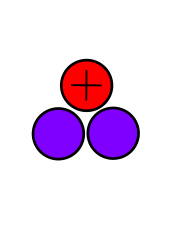 |
|---|
Lithium-6 + Neutron → Helium-4 + Tritium Cross section of 940 barns
Half life Obtainable by
year neutron transmutation
Fluorine-18 .000209
Molybdenum-99 .00752 * Decays to Technetium-99m, which has a half life of 6.01 hours
Thallium-201 .00832
Iodine-131 .022 *
Iodine-125 .0362
Palladium-103 .0465 *
Strontium-82 .0694 Decays to Rubidium-82
Iridium-192 .202 *
Strontium-89 *
Samarium-153 *
Rhenium-186 *
Lutetium-177 *
Bismuth-213 *
Lead-212 *
Radium-223
Boron-10 Stable Natural
Gadolinium-157 Stable Natural
 |
|---|
Some isotopes undergo 5 or 6 alpha decays, such as uranium-232. This is the red line in the plot.
U-232 → Th-228 → Ra-224 → Rn-220 → Po-216 → Pb-212 → Bi-212 → Po-212 → Pb-208
The double-decay nuclei with half lives between 1 month and 100 years are:
1st decay 2nd decay Total 1st 2nd Obtainable by neutron transmutation
half life half life energy energy energy
year year MeV MeV MeV
Osmium-194 → Ir-194 → Pt-194 6.02 .00022 2.330 .096 2.234 *
Tungsten-188 → Re-188 → Os-188 .191 .00194 2.469 .349 2.120 *
Rhenium-184m → Re-184 → Os-184 .463 .104 .646 .188 .458 *
Hafnium-172 → Lu-172 → Yb-172 1.87 .0283 1.835 .338 1.497
Fermium-247 → Es-253 → Cm-249 .275 .0560 *
Rhodium-102m → Rh-102 → Ru-102 3.742 .567 1.509 .141 1.268
Einstein-254 → Cf-250 → Cm-246 .755 13.3 *
Titanium-44 → Sc-44 → Ca-44 59.1 .00046 3.798 .146 3.652
Strontium-90 → Y-90 → Zr-90 28.9 .00731 2.826 .546 2.280 *
Iridium-192m → Ir-192 → Pt-192 241 .202 1.615 .155 1.460 *
Tin-121m → Sn-121 → Sb-121 43.9 .00308 .396 .0063 .390 *
Argon-42 → K-42 → Ca-42 32.9 .00141 4.124 .599 3.525 *
Silicon-32 → P-32 → S-32 153 .0391 1.919 .21 1.709 *
Germanium-68 → Ga-68 → Zn-68 .742 .000129
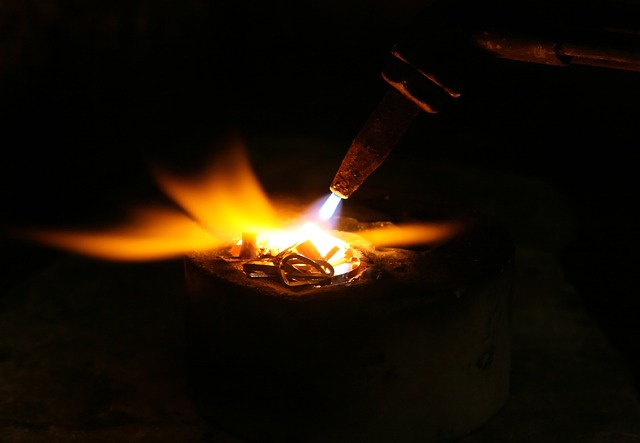 |
|---|
Melt Boil Density
Zirconium 2128 4650
Niobium 2750 5017
Molybdenum 2896 4912
Technetium 2430 4538
Ruthenium 2607 4423
Rhodium 2237 3968
Lutetium 1925 3675
Hafnium 2506 4876 13.3
Tantalum 3290 5731 16.7
Tungsten 3695 6203 19.2
Rhenium 3459 5309 21.0
Osmium 3306 5285 22.6
Iridium 2719 4403 22.6
Platinum 2041 4098 21.4
Thorium 2023 5061
Protactinium 1810 4300
Uranium 1405 4404 19.1
Neptunium 912 4447
Curium-240 produces 2 alphas with short half lives and becomes Uranium-232, which has a long half life. Uranium-232 produces an alpha with a long half life and then 5 more alphas with short half lives. It can be used as an alpha rocket, where the first two decays give it a fast launch, and the remaining decays power it for a long time. The decay sequence of Curium-240 is:
Half life
year
Curium-240 .0739 Alpha
Plutonium-236 2.858 Alpha
Uranium-232 68.9 Alpha
Thorium-228 1.912 Alpha
Radium-224 .00986 Alpha
Radon-220 .0000018 Alpha
Polonium-216 .000000005 Alpha
Lead-212 .00121 Alpha
Bismuth-212 .00012 Beta
Tellurium-208 .0000057 Alpha
Lead-208 Stable Beta
Cross sections for fusion neutrons at 14.1 MeV, in millibarns. All columns are fusion neutrons except the last column, which is fast fission neutrons. For fusion neutrons, the usual outcome is for neutrons to be subtracted from the target nucleus.
Thorium is more likely to lose neutrons than uranium.
(n,2n) (n,3n) (n,fission) (n,inelastic) (n,G) (n,2n)
fission
Actinium-227 2170 353 62.8 445 1.119 15.87
Thorium-228 1897 85.8 598 498 1.23 7.39
Thorium-229 1717 92.7 864 346 1.19 33.5
Thorium-230 1856 244 564 424 .96 12.2
Thorium-231 1685 336 658 349 1.21 42.7
Thorium-232 1786 522 361 468 1.14 16.8
Uranium-320 174 .0126 2518 416 .78 .138
Uranium-321 75 .000028 2474 403 .69 2.08
Uranium-322 401 .77 2570 420 .82 .760
Uranium-233 181 .271 1.84 368 .58 1.84
Curium-242 231 .120 2907 359 1.19 .921
The prompt kinetic energy released by fission is:
Fission energy (MeV)
Actinium 168
Thorium 172
Protactinium 177
Uranium 181
Neptunium 185
Plutonium 189
Americium 195
Curium 198
Berkelium 203
Californium 207
 |
|---|
There is a hypothetical "island of stability" around atomic number 112 where nuclei may be long-term stable. A second island may exist at atomic number 126.
Experiments can only measure the longest-lived isotope up to a proton number of 105, and beyond that we plot theory. Theoretical half lives are uncertain by an order of magnitude.
 |
|---|
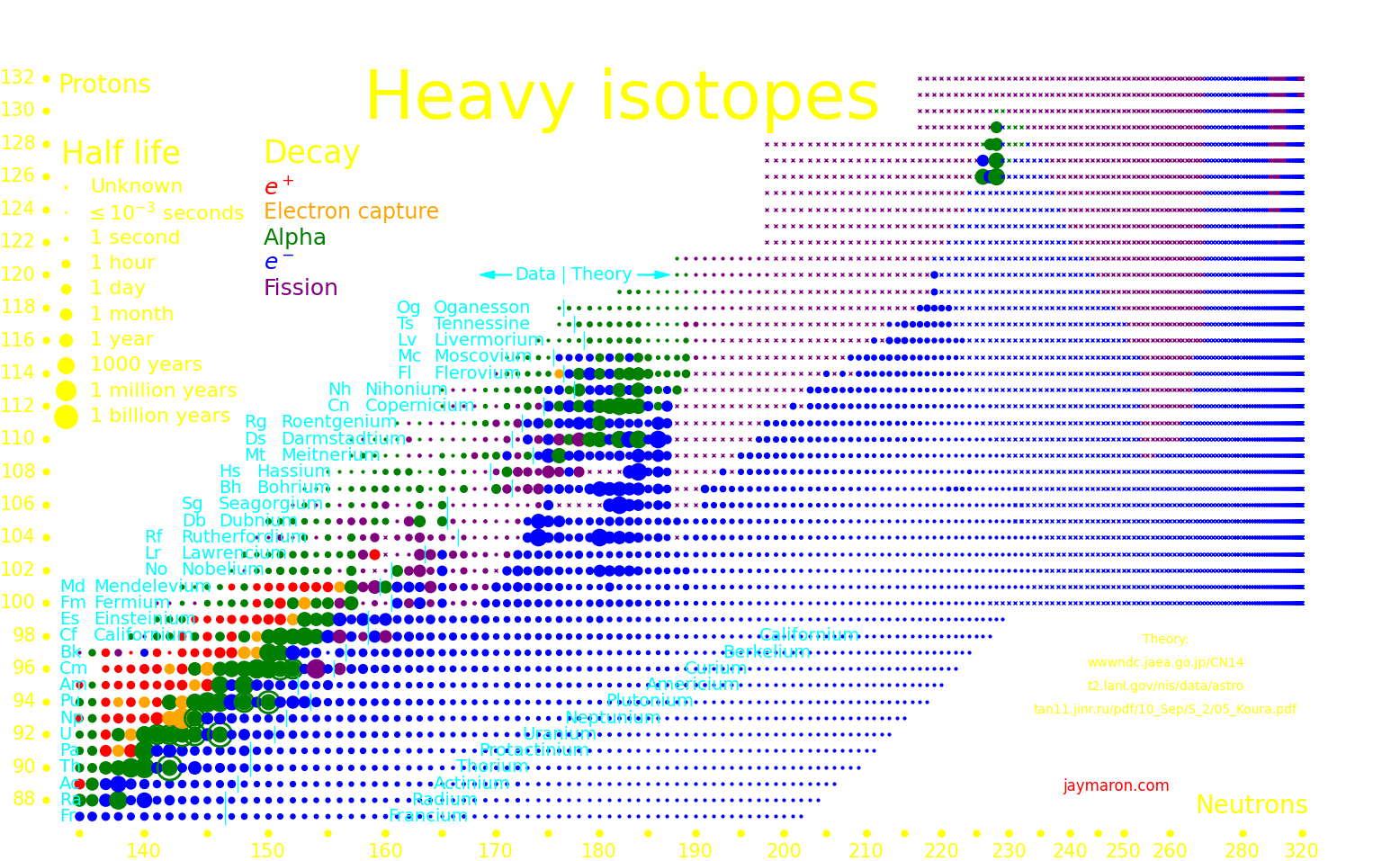 |
|---|
It's possible that for large nucleon number, larger than around 300, that the nucleus transitions to a lower-energy state, called "Up down quark matter", or "udQM". The existence of udQM is unresolved. Theory is uncertain, and it hasn't been experimentally produced. The largest nucleus that's been produced is oganesson-294, with 118 protons and 294 nucleons. It shows no sign of udQM, so if udQM exists, it's beyond oganesson.
If udQM nuclei exist, they could potentially be long-term stable. They don't fission because it would take the nucleus to a higher-energy state. They decay by alpha until they're too light to be udQM, at which point they fission.
If udQM nuclei exist, then there may exist long-lived elements from Z=140 to way beyond. These are "continental elements".
The largest nucleus that standard nuclei can make has Z=140. Nuclei larger fission instantly. The only way that nuclei with Z>140 can exist is if udQM exists.
In the isotope table, we use experimental data from Wikipedia if it exists, otherwise we use theory from https://wwwndc.jaea.go.jp/CN14 and https://t2.lanl.gov/nis/data/astro. Nobel gases have a closed shell of electrons, and the shell numbers are called "magic numbers". The magic numbers for electron shells are:
Helium 2 Neon 10 Argon 18 Krypton 36 Xenon 54 Radon 86 Oganesson 118
The magic numbers for neutrons are 2, 8, 20, 28, 50, 82, 126, 184. The magic numbers for protons are the same as for neutrons, up to 82, and the next proton magic numbers are 114, 126, 154, and 164. Nuclei that are magic for both protons and neutrons are:
Protons Neutrons
Helium-4 2 2
Oxygen-16 8 8
Calcium-40 20 20
Calcium-48 20 28
Lead-208 82 126
Flevorium-298 114 184 Undiscovered
Unnamed 126 216 Undiscovered
Unnamed 126 228 Undiscovered
Unnamed 154 308 Undiscovered
Unnamed 164 308 Undiscovered
Unnamed 164 318 Undiscovered
Unnamed 164 406 Undiscovered
The nuclei from helium-4 to lead-208 are stable.
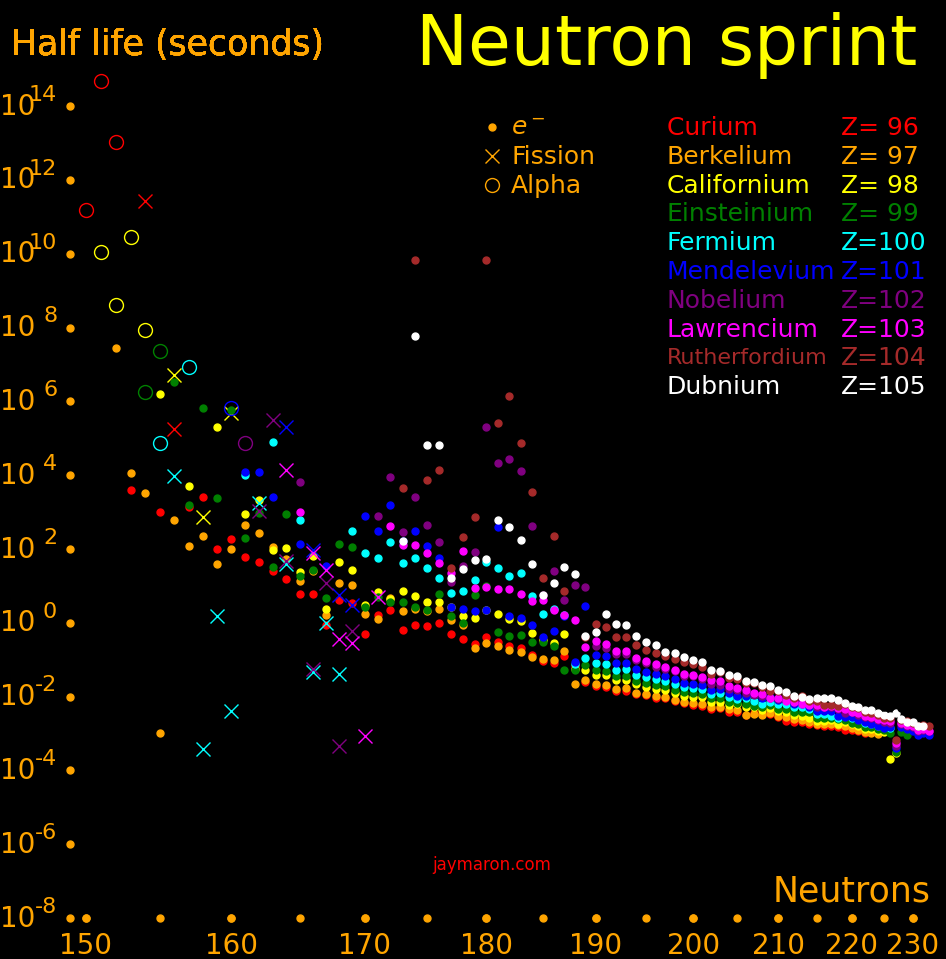 |
|---|
A Fermi gas with a Fermi energy of 335 neV has a density of 1.39e23 particles/meter3
Fermi number density = n = 16π/3 λ-3= 1.39e23 particles/meter3
Fermi wavelength = λ = 4.94e-8 meter
Fermi momentum = Q = 1.34e-26 kg*meter/second
Planck constant = h = Q ℏ = 6.626e-34 Joule*second
Fermi energy = E = Q2/(2m) = ℏ2/(2m) (3π2n)2/3
= 335 neV
Neutron mass = m = 1.675e-27 kg
Half life Energy Capture Source Hotness Spice Agile Saturate Gamma
year MeV barn MeV/yr
Dyspros-165 .000266 1.286 2840 1 4835 261 .054
Mercury-197 .00732 .600 3080 .0016 82 82 1.61
Rhenium-186 .0102 1.207 112 .374 118 9.6 .082
Lutetium-177 .0181 .498 2065 1 27.5 27.5 2.67
Ytter-169 .0822 2230 .0014 13.1
Iridium-192 .202 1.460 954 .373 7.2 7.2 13.8 Calutron
Cal-252 2.64 12.33 2849 1 4.7 4.7 537
Scandium-46 .229 2.366 27.5 1 10.3 .45 1.121
Osmium-185 .256 1.013 3003 .0002 3.96 3.96 55 Calutron
Hafnium-175 .192 .684 550.5 .0016 3.6 3.6 7.5
Hafnium-181 .116 1.027 12.9 1 8.85 .95 .107
Hafnium-183 .000122 2.010 133.1 1 16500 19.1 .00116
Tantalum-182 .313 1.814 20.5 5.8 2.67 .46
Tungsten-181 .332 1.732 60 .0012
Spicy isotopes have a high melting point and short half life. They can make a solid ball with a temperature of 4000 Kelvin and a radius as small as 1 cm. Some can be made in bulk, those for which the precursor isotope has a high neutron capture cross section.
Spiciness Half life Energy Precursor Bulk Gamma
MeV/year year MeV barn
Scandium-46 10.3 .229 2.366 27.5 1.121
Californium-252 4.7 2.64 12.33 2849 4.7
Ytterbium-169 .0822 2230
Osmium-185 4.0 .256 1.013 3003 4.0 Calutron
Iridium-192 7.2 .202 1.460 954 Calutron
Hafnium-175 3.6 .192 .684 550.5 3.6
Hafnium-183 .000122 2.010 133.1 0
Rhenium-186 118 .0102 1.207 112 9.6 .082
Iridium-194 .00220 111
Rhenium-188 .00194 76.4
Tungsten-187 .00270 35
Tungsten-181 5.2 .332 1.732 60
Tungsten-188 .191 .349 -
Osmium-191 .0421 13.1
Hafnium-181 .116 1.027 12.92 .137
Tantalum-182 .313 1.814 20.5
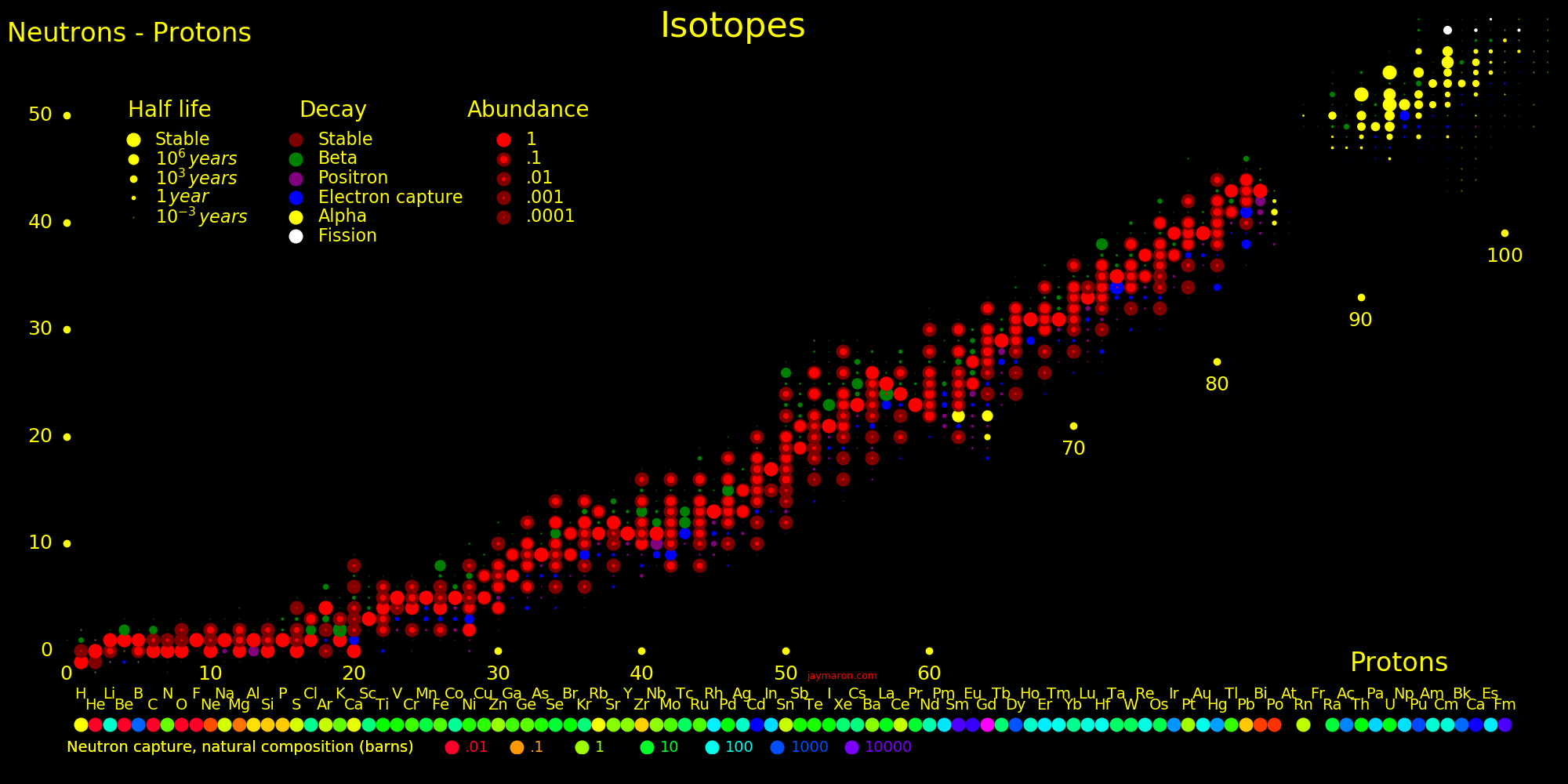 |
|---|
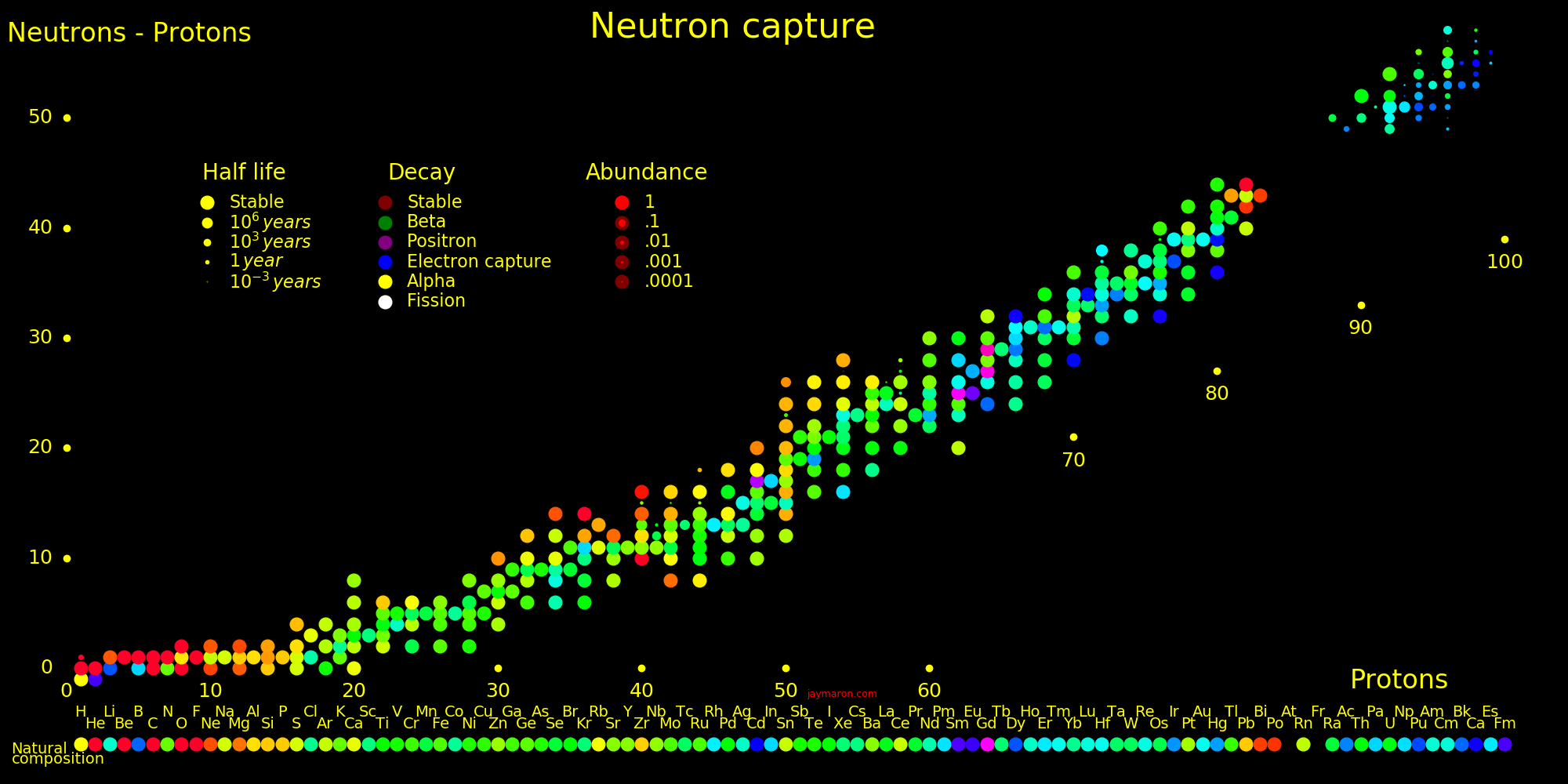 |
|---|
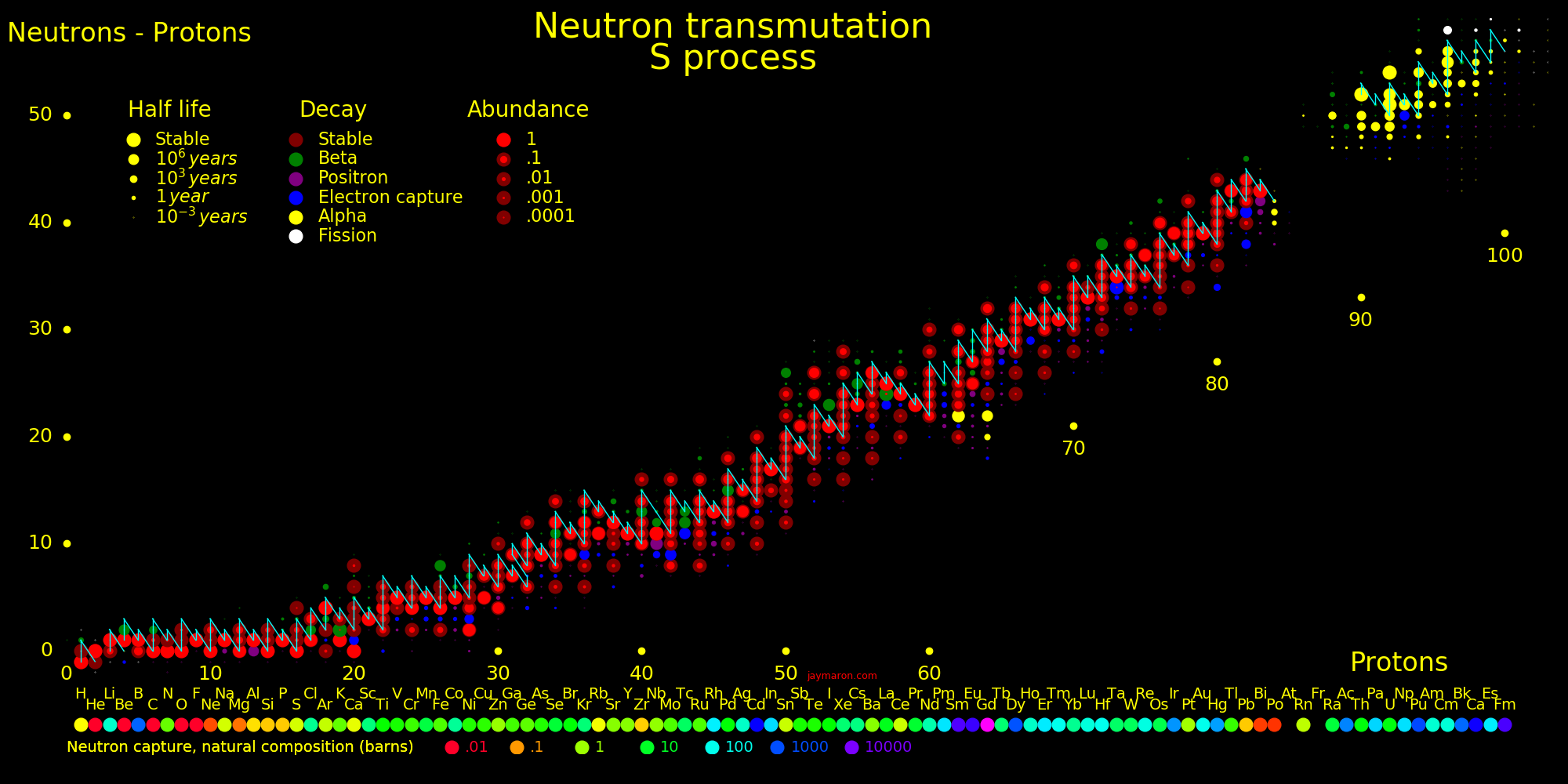 |
|---|
 |
|---|
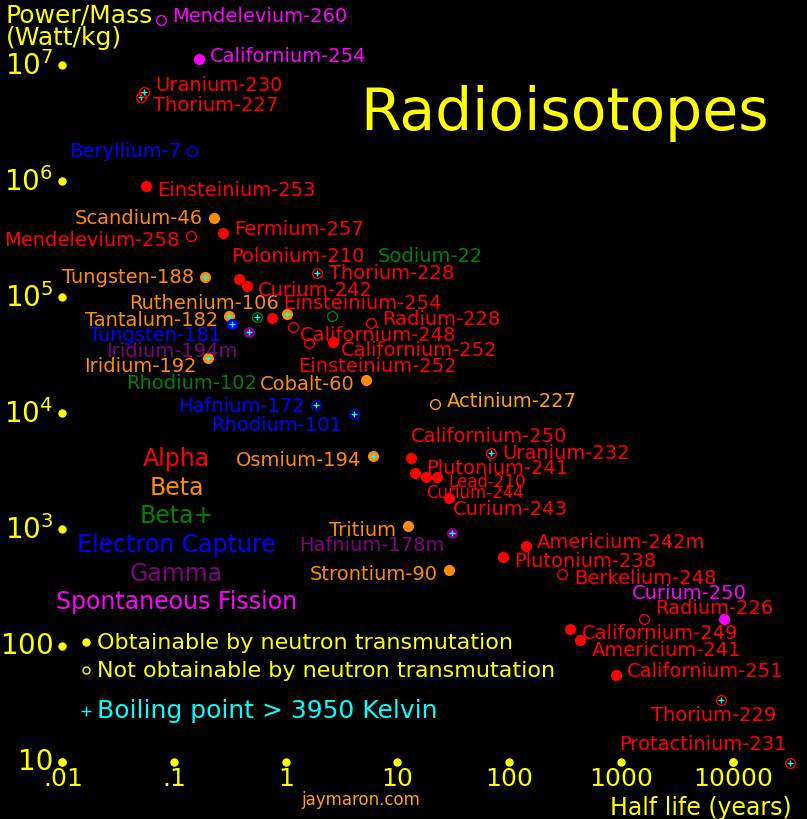 |
|---|
Full list.
Half life Heat Decay Electron Elect Gamma Form rate Obtainable Decay
max ave max by neutron
year Watt/kg MeV MeV MeV MeV barn*year transmute
Neutron .000027 .782 .782 * β Half life = 879 seconds
Einsteinium-253 .0560 * α
Tungsten-188 .191 19920 .349 8.49 * 2β
Californium-254 .166 11200000 207 .0102 * Fission
Iridium-192 .202 77147 1.460 134 * β
Scandium-46 .229 460000 2.366 .357 .112 1.121 .38 * β
Sulfur-35 .239 .167 .0488 * β
Fermium-247 .275 * α
Tantalum-182 .313 65260 1.814 4.45 * β
Tungsten-181 .332 59100 1.732 .0166 * EC
Thulium-170 .352 11800 .968 .968 .968 37.2 * β M 73% e- .968 MeV. 22% e- .884 MeV & .084 MeV gamma
Polonium-210 .379 139000 5.41 0 .0089 * α M
Calcium-45 .445 .257 .257 .257 * β
Curium-242 .446 * α
Gadolinium-153 .658 .484 .173 * EC
Zinc-65 .668 63900 1.352 .21 * β+
Einsteinium-254 .755 * α
Samarium-145 .931 * EC
Ruthenium-106 1.023 67700 3.584 .00014 * 2β
Cadmium-109 1.267 * EC
Thulium-171 1.91 .0965 30.8 * β
Caesium-134 2.06 15300 2.059 21 * β
Promethium-147 2.6 1200 .224 .86 * β
Californium-252 2.64 41400 12.33 0 * α 96.9% (6.12 Mev). Fission 3.09% (207 MeV)
Iron-55 2.74 3140 .231 .091 * EC
Thallium-204 3.78 .766 * β
Europium-155 4.76 705 .252 * β
Cobalt-60 5.27 18300 2.82 1.39 * β
Promethium-146 5.5 1.495 * EC 66%, e- 34%
Osmium-194 6.02 4313 2.330 .090 * 2β
Europium-154 8.59 3049 1.968 216 * β
Barium-133 10.51 758 .517 .0049 * EC
Tritium 12.33 1031 .0186 .0186 .0057 49 * β
Europium-152 13.5 1858 1.86 6005 * β & EC
Californium-250 13.08 * α
Cadmium-113m 14.1 340 .264 * β
Plutonium-241 14.3 3050 4.90 * β
Promethium-145 17.7 131 .164 * EC
Curium-244 18.1 * α
Lead-210 22.3 2907 9.100 0 .00000037 * α
Strontium-90 28.9 460 2.826 .29 * β, β M
Curium-243 29.1
Caesium-137 30.1 583 1.176 * β
Hafnium-178m2 31 930 2.446 * γ
Argon-42 32.9 .599 * β
Tin-121m 43.9 153 .396 .088 * IT, β
Platinum-193 50 17.5 .057 6.93 * EC
Plutonium-238 87.7 578 5.59 0 .125 * α
Samarium-151 90.0 11.6 .077 34 * β
Nickel-63 100.1 5.52 .066 .066 .017 .066 9.96 * β
Americium-242m 141 725 12.33 0 5.8 * 2α
Silicon-32 153 804 1.92 2.22 * β, β
Iridium-192m2 241 72 1.628 69 * β
Argon-39 269 .566 * β
Californium-249 351 * α
Americium-241 432.2 114 * α M
Californium-251 900 * α
Curium-246 4760 * α
Carbon-14 5730 3.99 .156 .156 .049 * β
Plutonium-240 6561 5.256 * α
Americium-243 7370 * α+β
Curium-250 8300 170 148 .000019 * Fission 74%, Alpha 18%, Beta 8%
Curium-245 8500 * 2α+β
Plutonium-239 24110 * α
Technetium-99 211000 .003 .294 * β
Curium-248 348000 * α
Plutonium-242 375000 * α
Beryllium-10 1390000 .556 * β
Technetium-97 4200000 * EC
Technetium-98 4200000 * β
Curium-247 15600000 * 3α+2β
Uranium-236 23420000 * α
Plutonium-244 81300000 * 3α+2β
Thorium-227 .0512 9194000 36.14 5α+2β
Uranium-230 .0554 9280000 6α+2β
Thorium-228 1.912 235000 34.784 5α+2β
Radium-228 5.75 90660 40.198 5α+4β
Actinium-227 21.8 21600 36.18 5α+3β
Uranium-232 68.9 7545 40.79 6α+2β
Radium-226 1599 286 34.958 5α+4β
Thorium-229 7917 57.7 35.366 5α+3β
Protactinium-231 32600 16.2 41.33 6α+3β
Thorium-230 75380 6.78 39.728 6α+4β
Uranium-233 159200 * 6α+2β
Uranium-234 245500 7α+4β
Neptunium-237 2144000 8α+4β
Curium-247 15600000 * 3α+2β
Uranium-235 703800000 * 7α+4β
Uranium-238 4468000000 .00010 51.771 * 8α+6β
Thorium-232 14050000000 47.655 * 6α+2β
Mendelevium-260 .076 Fission
Mendelevium-258 .141 α
Beryllium-7 .146 1822000 .547 EC
Cobalt-56 .212 β+
Rhenium-184m .463 16000 IT, β
Thulium-168 .255 β+
Gold-195 .510 .227 .210 EC
Cobalt-57 .744 .836 .137 EC
Manganese-54 .855 64400 EC
Vanadium-49 .901 .602 EC
Californium-248 .913 α
Einsteinium-252 1.29 0 α, EC
Lutetium-173 1.37 .630 EC
Tantalum-179 1.82 1.060 EC
Plutonium-236 2.858 α
Hafnium-172 1.87 11700 1.835 EC
Sodium-22 2.6 68700 2.842 β+ or EC
Polonium-208 2.99 0 α
Rhodium-101 3.3 EC
Lutetium-174 3.31 β+
Rhodium-102m 3.742 β+
Rhodium-101 4.07 9890 1.980 EC
Niobium-93m 16.1 IT
Bismuth-207 31.55 2.397 β+
Europium-150 36.9 2.259 β+
Titanium-44 59.1 4318 3.798 EC, β+
Terbium-157 71.0 11.0 .060 β+
Gadolinium-148 75 800 0 α
Polonium-209 125.2 0 α
Terbium-158 180 β+
Iridium-192m2 241 IT, β
Holmium-163 4570 EC
Darmstadtium-293 37.7 58900 220 β+fission Theoretical
Darmstadtium-292 133 16700 220 α+fission Theoretical
Copernicium-294 355 6230 220 α+fission Theoretical
Darmstadtium-294 380 5820 220 α+fission Theoretical
Argon-37 .0824 .814 0 * EC
Argon-39 269 * β
Argon-42 32.9 * β
Krypton-85 10.78 * β
Xenon-127 .0994 .662 0 .618 * EC
Half life Heat Decay Electron Elect Gamma Form rate Obtainable Decay
max ave max by neutron
year Watt/kg MeV MeV MeV MeV barn*year transmute
A neutron has a half life of 610.1 seconds and a decay energy of .782 MeV.
Full list.
Half life Power/mass Decay Gamma Formation Obtainable by Decay
energy max rate neutron
year Watt/kg MeV MeV barn*year transmutation
Nickel-63 100.1 5.52 .017 .017 2.5 * β
Tritium 12.33 315 .0186 .0186 71 * β
Rubidium-83 .236 .910 .0322 0 EC
Arsenic-73 .220 .341 .0534 0 EC
Terbium-157 71.0 11.0 .060 .054 0 EC
Samarium-145 .931 .617 .061 .022 * EC
Tantalum-179 1.82 .110 .065 0 EC
Promethium-145 17.7 131 .164 .072 .022 * EC
Samarium-151 90.0 11.6 .077 .077 * β
Platinum-193 50 17.5 .057 .076 3.81 * EC
Cadmium-109 1.26 .216 .088 .57 * EC
Thulium-171 1.91 606 .096 .096 30.8 * β
Gadolinium-153 .658 .484 .100 * EC
Iron-55 2.74 3140 .231 .126 .36 * EC
Cobalt-57 .744 .836 .136 0 EC
Europium-155 4.76 705 .252 .147 312 * β
Cerium-139 .377 .278 .166 * EC
Gadolinium-153 .658 .484 .173 * EC
Gold-195 .510 .227 .210 EC
Promethium-147 2.6 1200 .224 .224 1.3 * β
Calcium-45 .445 .257 .257 * β
Rhodium-101 3.3 9890 .541 .325 0 EC
Europium-149 .255 .692 .328 0 EC
Barium-133 10.51 758 .517 .384 * EC
Tin-121m 43.9 153 .396 .390 .01 * IT & β
Beryllium-7 .146 .862 .478 0 EC
Vanadium-49 .901 232 .602 ? 0 EC
Making radium from polonium needs extreme neutron flux. The hurdle is polonium-212 with a half life of 249 nanoseconds. Once you have radium, it's easy to get to thorium.
Half life Neutron capture Decay
second barn
Bismuth 209 Stable .0338
Bismuth 210 433000 e-
Bismuth 211 130 alpha
Polonium 210 12000000 .00123 alpha
Polonium 211 .516 alpha
Polonium 212 .000000249 alpha
Polonium 213 .00000365 alpha
Polonium 214 .000164 alpha
Polonium 215 .00178 alpha
Polonium 216 .145 alpha
Polonium 217 1.47 alpha 95%, beta 5%
Polonium 218 186 alpha
Polonium 219 618 beta 71.8%, alpha 28.2%
Polonium 220 40 beta
Polonium 221 132 beta
Polonium 222 546 beta
Polonium 223 6 beta
Polonium 224 180 beta
Polonium 225 10 beta
Polonium 226 60 beta
Polonium 227 2 beta
Astatine 217 .0323 alpha
Astatine 218 1.27 alpha
Astatine 219 56 alpha 97%, beta 3%
Astatine 220 223 beta 92%, alpha 8%
Astatine 221 138 beta
Astatine 222 54 beta
Astatine 223 50 beta
Astatine 224 150 beta
Astatine 225 3 beta
Astatine 226 420 beta
Astatine 227 5 beta
Astatine 228 60 beta
Astatine 229 1 beta
Radon 225 280 beta
Radon 226 444 beta
Radon 227 20.8 beta
Radon 228 65 beta
Radon 229 12 beta
Radon 230 ? beta
Radon 231 ? beta
Francium 228 38 beta
Francium 229 50.2 beta
Francium 230 19.1 beta
Francium 231 17.6 beta
Francium 232 5 beta
Francium 233 .9 beta
Radium 223 988000 alpha
Radium 224 314000 alpha
Radium 225 1290000 beta
Radium 226 1600 year alpha
Radium 227 2550 beta
Radium 228 182000000 beta
Radium 229 240 beta
Radium 230 5580 beta
Radium 231 103 beta
Radium 232 250 beta
Radium 233 30 beta
Radium 234 30 beta
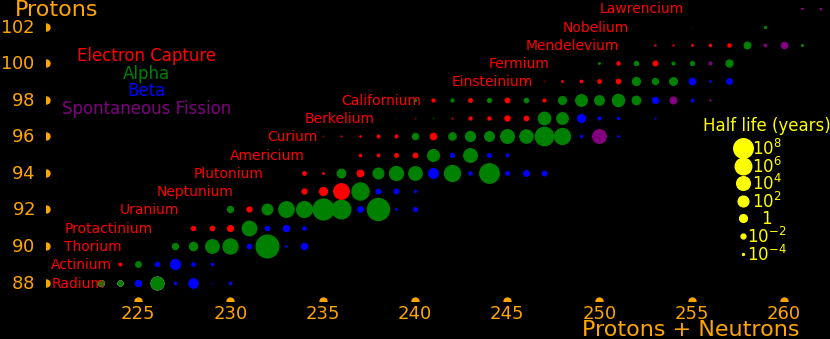 |
|---|
The actinides are the elements from actinium to lawrencium. None are stable but many are long-lived.
 |
|---|
Neutron capture transmutes an isotope one space to the right and beta decay transmutes an isotope one space up.
The most massive nuclei that exist naturally are thorium-232, uranium-235, or uranium-238. All are unstable but have half lives larger than 700 million years. The road starts with these isotopes and then adding neutrons transmutes them according to the orange lines. The road forks at beta isotopes, which can either beta decay or capture a neutron.
The end of the road is fermium. Neutrons can't further increase the proton number because no fermium isotopes on the road beta decay. The road goes as far as fermium-258, which has a half life of .00037 seconds and spontaneously fissions. Producing heavier isotopes requires an accelerator or an extreme neutron flux (such as occurs in a fission bomb).
Most of the long-lived isotopes are on the neutron road, the most significant exceptions being neptunium-236 and berkelium-247. These isotopes can be reached by alpha decay, which moves an isotope 2 spaces down and 4 to the left.
Americium-242m (half live 141 years) is an excited state of Americium-242 (half life .0018 years) with a high thermal neutron capture cross section.
The thermal neutron capture cross section of Americium-241 to Americium-242 is 748 barns, and to Americium-242m is 83.8 barns.
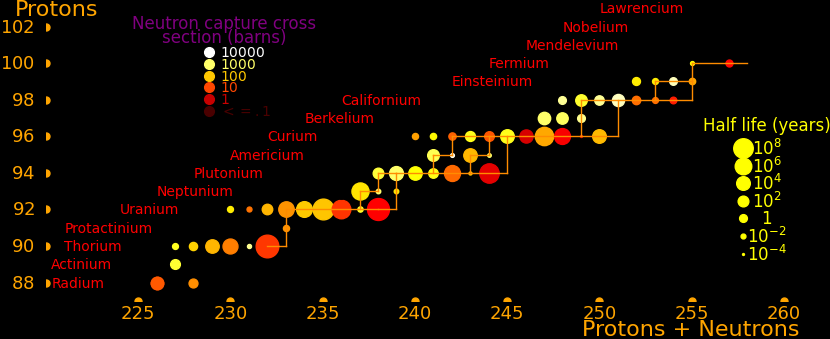 |
|---|
Transmutation rate is proportional to the neutron capture cross section. In order to move rightward on the road the isotope has to have a large neutron capture cross section and it has to have a large half life. This is true everywhere on the road except for curium-249, and so all the long-lived isotopes on the road are easily created, except for curium-250.
The road has a bottleneck at curium-246, which is the isotope with the lowest capture cross section (1.36 barns). The capture cross section of curium-248 is also low (2.49 barns). Traffic slows down here and all the isotopes further down the road have to wait for curium-246 and curium-248.
To create curium-250 you start with curium-248 and add a neutron to produce curium-249. Curium-249 has a half life of 64 minutes and you have to hope it captures a neutron before the decay.
 |
|---|
The fission cross section is for thermal neutrons with a Maxwellian spectrum centered at .025 eV. The isotopes with large fission cross sections are:
Thermal Critical Half life
neutron mass
fission
barns kg years
Americium-242m 6686 11 141
Californium-251 4801 5.5 900
Einsteinium-254 2900 9.9 .75
Neptunium-236 2800 6.8 154000
Curium-245 2161 10 8500
Californium-249 1665 6 351
Plutonium-241 937 12 14.3
Plutonium-239 748 10 24100
Curium-243 690 8 29.1
Uranium-235 538 52 704000000
Uranium-233 468 15 159200
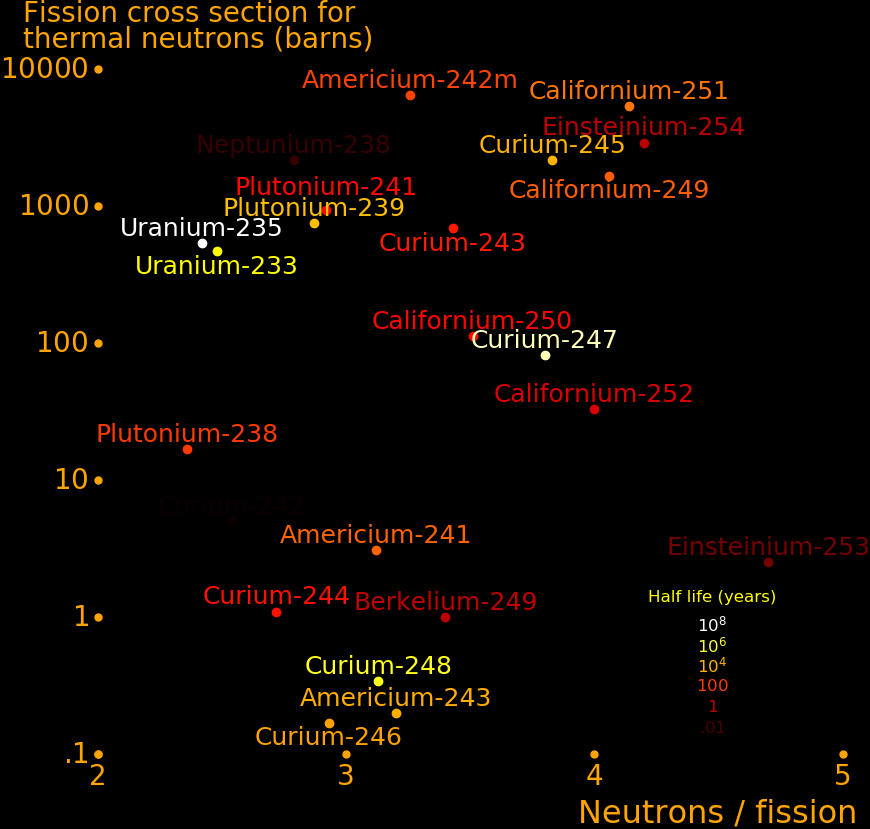 |
|---|
 |
|---|
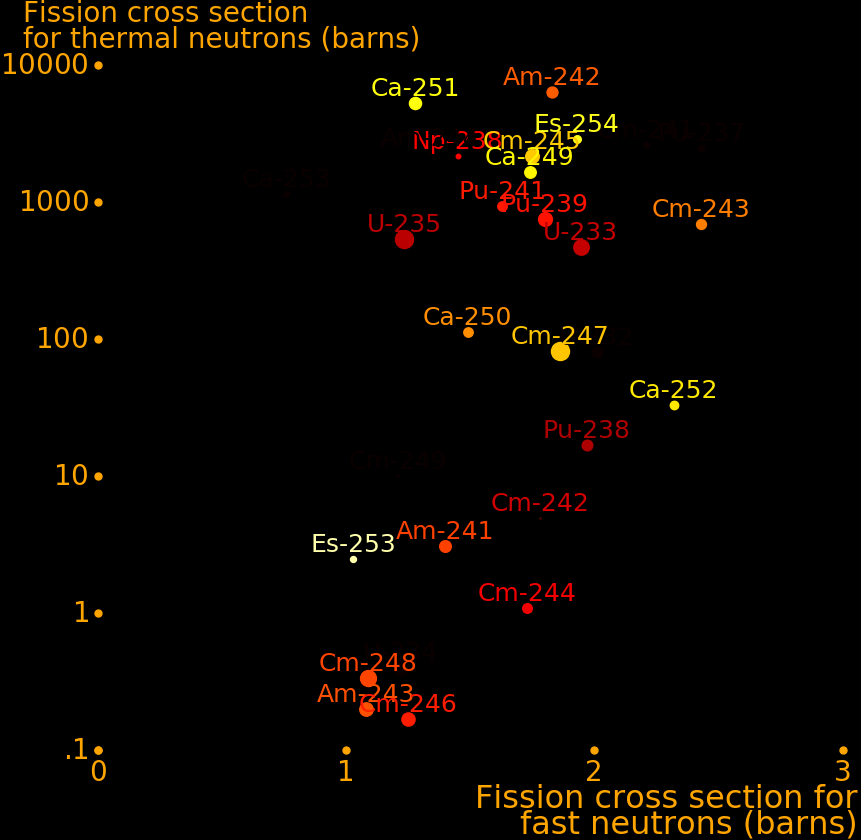 |
|---|
Fast Crit Crit Half life Fast Fast
neutron mass diam neutrons capture
fission /fission
barns kg cm years barns
Californium-252 2.32 2.73 4.30
Californium-251 1.28 5.46 900 4.56 .63r
Californium-249 1.74 6 351 *
Curium-247 1.86 7.0 *
Neptunium-236 7 154000 *
Curium-243 2.43 8 29.1 3.70 .4
Plutonium-238 1.994 9.5 3.148
Einsteinium-254 9.89 .75 *
Curium-245 1.75 10 8500 4.0 .4
Plutonium-239 1.800 10 24100 3.123
Americium-242m 1.83 10 141 3.53 .6
Plutonium-241 1.648 12 14.3 3.142
Curium-244 1.73 15 3.52 .8
Uranium-233 1.946 15 159200 2.649
Uranium-235 1.235 52 704000000 2.606
Plutonium-240 1.357 40 3.061
Curium-246 1.25 45 3.49 .4
Neptunium-237 1.335 60 2.889 1.8
Berkelium-247 75.7
Plutonium-242 1.127 80 3.07
Americium-241 1.378 60 3.457 2.0
Berkelium-249 192 3.74
Americium-243 .2i 200 3.45 1.8
Einsteinium-254m
Isotopes with a neutron capture cross section of 1 barn or more can be transmuted on a timescale of 10 years. Isotopes with a cross section smaller than this can't be practically transmuted.
To calculate the transmutation rate,
Neutron flux = F = 10-8 neutrons/barn/second Neutron capture = A = 10 barns Transmutation rate = R = FA = 10-7 transmutations/second = 3.2 transmutations/year
 |
 |
|---|---|
If a nucleus is hit with a pulse of neutrons then the probability that a fission occurs is:
Thermal neutron fission cross section = A = 6400 barns = 6.4⋅10-25 meters2 For Americium-242m Neutron pulse magnitude = F = 1020 neutrons/meter2 Fission probability = P = AF = 6.4⋅10-5 fissions
Actinides are useful for:
*) Neutron-induced fission
*) Radioactivity heat
*) Spontaneous fission
All of these properties are useful for spacecraft. The most useful actinides are:
Half life Neutron Spontaneous Radioactivity
fission fission
years barns Watts/kg Watts/kg
Uranium 233 159200 468
235 704000000 538
Plutonium 238 87.7 818
239 14100 748
241 14.3 937 4315
Americium 241 432
242m 141 6686
Curium 243 29.1 690 2666
244 18.1 4014
245 8500 2161
246 4730
247 15700000
248 340000 .64 .81
250 9000 240 241
Berkelium 249 .90
Californium 248 .91 86 86209 Off-road
249 351 1665
250 13.08 158 5778
251 900 4801
252 2.64 31227 58470
253 .049
254 .166 15896000 15897000
Einsteinium 254 .75 2900
Fermium 257 .275 ? 20000 279000
After Before
ppt ppt
U-234 .2
U-235 10.3 33
U-236 4.4
U-238 943 967
Pu-238 .18
Pu-239 5.7
Pu-240 2.21
Pu-241 1.19
Pu-242 .49
Np-237 .43
Am-241 .22
Am-242 .0007
Am-243 .10
Cm-242 .00013
Cm-243 .00032
Cm-244 .024
Fission products 35
Tc-99 .81
Neutron flux (Neutrons/cm2/second)
Power reactor 5e13
High-flux reactor 6e15
Cosmological s-process e16
Cosmological r-process e27
Fission bomb e31
Thermal Fast Crit Crit Half life Slow Fast SF Therm Fast Fast SF SF
neutron neutron mass diam neutr neut neut capt capt inel
fission fission /fiss /fiss /fiss barn barn W/kg neut/s/kg
barns barns kg cm years
Thorium-232 .078 2.16
Protactinium-231 .83 2.457
Uranium-232 80 2.013 3.296 2
Uranium-233 468 1.946 15 159200 2.48 2.649 73
Uranium-234 .407 1.223 2.578 1.8 3.9
Uranium-235 538 1.235 52 704000000 2.42 2.606 2.0 690 .0057
Uranium-236 .042 .594 2.526 1.8 2.3
Uranium-238 .00001 .308 2.601 1.97 2.68 5.51
Neptunium-236 2800 * 7 154000 * *
Neptunium-237 .019 1.335 60 2.54i 2.889 2 1.8 <.05
Neptunium-238 1243 1.45 .0058 2.79i 2.99i .1
Plutonium-237 2100i .124 * *
Plutonium-238 16.8 1.994 9.5 87.7 2.36 3.148 2.28 558 1204000 Alpha
Plutonium-239 748 1.800 10 24100 2.87 3.123 2.9 1017.3 10.1 Alpha
Plutonium-240 .030 1.357 40 6560 3.061 2.189 478000
Plutonium-241 937 1.648 12 14.3 2.92 3.142 36 <.8 Beta
Plutonium-242 .0026 1.127 80 373000 3.07 2.28 805000
Plutonium-243 181i
Plutonium-244 80800000
Plutonium-245 8500
Americium-241 3.1 1.378 60 3.12 3.457 2.0 500
Americium-242 1322i 3.4i .7
Americium-242m 6686 1.83 10 141 3.26 3.53i 2 .6
Americium-243 .2 .2i 200 3.20i 3.45i 1.8
Americium-244 1528i 3.4i * * .9
Americium-244m 1220i 3.4i 3.14i 3.42i .8
Curium-241 2600 2.21 .090
Curium-242 5 1.78 2.54
Curium-243 690 2.43 8 29.1 3.43 3.70i .4
Curium-244 1.1 1.73 15 18.1 2.72? 3.52i 16.2 .8 3.24i(t) Alpha
Curium-245 2161 1.75 10 8500 3.83 4.0 383 .4 Alpha
Curium-246 .17 1.25 45 2.93 3.49i .4 3.19i(t)
Curium-247 82 1.86 7.0 15700000 3.80 * 58 Alpha
Curium-248 .34 1.09 3.13 * .64
Curium-249 1.21
Curium-250 * .67 3.30 *
Berkelium-247 * 75.7
Berkelium-249 1.0 * 192 3.40 3.74i 240
Berkelium-250 959i
Californium-246 3.1
Californium-248 1.32 86
Californium-249 1665 1.74 6 351 4.06 * 3.4 481.4
Californium-250 112 1.49 3.51 * 158
Californium-251 4801 1.28 5.46 900 4.1 4.56 2839 .62 2.216 Alpha
Californium-252 33 2.32 2.73 2.64 4.00i 4.30i 3.75 20.4 31227 Alpha
Californium-253 1138 * * *
Californium-254 2.001j 1.80 .75 3.85 *
Einsteinium-253 2.51 * 4.7 * 15.9M
Einsteinium-254 2900 * 9.89 .75 4.2 *
Einsteinium-254m 1840 * * *
Fermium-244 4
Fermium-246 4
Fermium-254
Fermium-255 3360i * 4 *
Fermium-256 3.63 *
Fermium-257 * * .275 3.87 * 20000
Nobelium-252 4.2
Thermal Fast Critical Diam Half life Slow Fast SF SF Spontaneous
neutron neutron mass neutrons neutrons neutrons fission
fission fission /fission /fission /fission W/kg neutron/s/kg
barns barns kg years
The prompt kinetic energy released by fission is:
Fission energy (MeV)
Actinium 168
Thorium 172
Protactinium 177
Uranium 181
Neptunium 185
Plutonium 189
Americium 195
Curium 198
Berkelium 203
Californium 207
 |
|---|
 |
|---|
The actinides are the elements from actinium to lawrencium. None are stable but many are long-lived.
 |
|---|
Neutron capture transmutes an isotope one space to the right and beta decay transmutes an isotope one space up.
The most massive nuclei that exist naturally are thorium-232, uranium-235, or uranium-238. All are unstable but have half lives larger than 700 million years. The road starts with these isotopes and then adding neutrons transmutes them according to the orange lines. The road forks at beta isotopes, which can either beta decay or capture a neutron.
The end of the road is fermium. Neutrons can't further increase the proton number because no fermium isotopes on the road beta decay. The road goes as far as fermium-258, which has a half life of .00037 seconds and spontaneously fissions. Producing heavier isotopes requires an accelerator or an extreme neutron flux (such as occurs in a fission bomb).
Most of the long-lived isotopes are on the neutron road, the most significant exceptions being neptunium-236 and berkelium-247. These isotopes can be reached by alpha decay, which moves an isotope 2 spaces down and 4 to the left.
Americium-242m (half live 141 years) is an excited state of Americium-242 (half life .0018 years) with a high thermal neutron capture cross section.
The thermal neutron capture cross section of Americium-241 to Americium-242 is 748 barns, and to Americium-242m is 83.8 barns.
 |
|---|
Transmutation rate is proportional to the neutron capture cross section. In order to move rightward on the road the isotope has to have a large neutron capture cross section and it has to have a large half life. This is true everywhere on the road except for curium-249, and so all the long-lived isotopes on the road are easily created, except for curium-250.
The road has a bottleneck at curium-246, which is the isotope with the lowest capture cross section (1.36 barns). The capture cross section of curium-248 is also low (2.49 barns). Traffic slows down here and all the isotopes further down the road have to wait for curium-246 and curium-248.
To create curium-250 you start with curium-248 and add a neutron to produce curium-249. Curium-249 has a half life of 64 minutes and you have to hope it captures a neutron before the decay.
 |
|---|
The fission cross section is for thermal neutrons with a Maxwellian spectrum centered at .025 eV. The isotopes with large fission cross sections are:
Thermal Critical Half life
neutron mass
fission
barns kg years
Americium-242m 6686 11 141
Californium-251 4801 5.5 900
Einsteinium-254 2900 9.9 .75
Neptunium-236 2800 6.8 154000
Curium-245 2161 10 8500
Californium-249 1665 6 351
Plutonium-241 937 12 14.3
Plutonium-239 748 10 24100
Curium-243 690 8 29.1
Uranium-235 538 52 704000000
Uranium-233 468 15 159200
 |
|---|
 |
|---|
 |
|---|
Fast Crit Crit Half life Fast Fast
neutron mass diam neutrons capture
fission /fission
barns kg cm years barns
Californium-252 2.32 2.73 4.30
Californium-251 1.28 5.46 900 4.56 .63r
Californium-249 1.74 6 351 *
Curium-247 1.86 7.0 *
Neptunium-236 7 154000 *
Curium-243 2.43 8 29.1 3.70 .4
Plutonium-238 1.994 9.5 3.148
Einsteinium-254 9.89 .75 *
Curium-245 1.75 10 8500 4.0 .4
Plutonium-239 1.800 10 24100 3.123
Americium-242m 1.83 10 141 3.53 .6
Plutonium-241 1.648 12 14.3 3.142
Curium-244 1.73 15 3.52 .8
Uranium-233 1.946 15 159200 2.649
Uranium-235 1.235 52 704000000 2.606
Plutonium-240 1.357 40 3.061
Curium-246 1.25 45 3.49 .4
Neptunium-237 1.335 60 2.889 1.8
Berkelium-247 75.7
Plutonium-242 1.127 80 3.07
Americium-241 1.378 60 3.457 2.0
Berkelium-249 192 3.74
Americium-243 .2i 200 3.45 1.8
Einsteinium-254m
Isotopes with a neutron capture cross section of 1 barn or more can be transmuted on a timescale of 10 years. Isotopes with a cross section smaller than this can't be practically transmuted.
To calculate the transmutation rate,
Neutron flux = F = 10-8 neutrons/barn/second Neutron capture = A = 10 barns Transmutation rate = R = FA = 10-7 transmutations/second = 3.2 transmutations/year
 |
 |
|---|---|
If a nucleus is hit with a pulse of neutrons then the probability that a fission occurs is:
Thermal neutron fission cross section = A = 6400 barns = 6.4⋅10-25 meters2 For Americium-242m Neutron pulse magnitude = F = 1020 neutrons/meter2 Fission probability = P = AF = 6.4⋅10-5 fissions
Actinides are useful for:
*) Neutron-induced fission
*) Radioactivity heat
*) Spontaneous fission
All of these properties are useful for spacecraft. The most useful actinides are:
Half life Neutron Spontaneous Radioactivity
fission fission
years barns Watts/kg Watts/kg
Uranium 233 159200 468
235 704000000 538
Plutonium 238 87.7 818
239 14100 748
241 14.3 937 4315
Americium 241 432
242m 141 6686
Curium 243 29.1 690 2666
244 18.1 4014
245 8500 2161
246 4730
247 15700000
248 340000 .64 .81
250 9000 240 241
Berkelium 249 .90
Californium 248 .91 86 86209 Off-road
249 351 1665
250 13.08 158 5778
251 900 4801
252 2.64 31227 58470
253 .049
254 .166 15896000 15897000
Einsteinium 254 .75 2900
Fermium 257 .275 ? 20000 279000
After Before
ppt ppt
U-234 .2
U-235 10.3 33
U-236 4.4
U-238 943 967
Pu-238 .18
Pu-239 5.7
Pu-240 2.21
Pu-241 1.19
Pu-242 .49
Np-237 .43
Am-241 .22
Am-242 .0007
Am-243 .10
Cm-242 .00013
Cm-243 .00032
Cm-244 .024
Fission products 35
Tc-99 .81
Neutron flux (Neutrons/cm2/second)
Power reactor 5e13
High-flux reactor 6e15
Cosmological s-process e16
Cosmological r-process e27
Fission bomb e31
Thermal Fast Crit Crit Half life Slow Fast SF Therm Fast Fast SF SF
neutron neutron mass diam neutr neut neut capt capt inel
fission fission /fiss /fiss /fiss barn barn W/kg neut/s/kg
barns barns kg cm years
Thorium-232 .078 2.16
Protactinium-231 .83 2.457
Uranium-232 80 2.013 3.296 2
Uranium-233 468 1.946 15 159200 2.48 2.649 73
Uranium-234 .407 1.223 2.578 1.8 3.9
Uranium-235 538 1.235 52 704000000 2.42 2.606 2.0 690 .0057
Uranium-236 .042 .594 2.526 1.8 2.3
Uranium-238 .00001 .308 2.601 1.97 2.68 5.51
Neptunium-236 2800 * 7 154000 * *
Neptunium-237 .019 1.335 60 2.54i 2.889 2 1.8 <.05
Neptunium-238 1243 1.45 .0058 2.79i 2.99i .1
Plutonium-237 2100i .124 * *
Plutonium-238 16.8 1.994 9.5 87.7 2.36 3.148 2.28 558 1204000 Alpha
Plutonium-239 748 1.800 10 24100 2.87 3.123 2.9 1017.3 10.1 Alpha
Plutonium-240 .030 1.357 40 6560 3.061 2.189 478000
Plutonium-241 937 1.648 12 14.3 2.92 3.142 36 <.8 Beta
Plutonium-242 .0026 1.127 80 373000 3.07 2.28 805000
Plutonium-243 181i
Plutonium-244 80800000
Plutonium-245 8500
Americium-241 3.1 1.378 60 3.12 3.457 2.0 500
Americium-242 1322i 3.4i .7
Americium-242m 6686 1.83 10 141 3.26 3.53i 2 .6
Americium-243 .2 .2i 200 3.20i 3.45i 1.8
Americium-244 1528i 3.4i * * .9
Americium-244m 1220i 3.4i 3.14i 3.42i .8
Curium-241 2600 2.21 .090
Curium-242 5 1.78 2.54
Curium-243 690 2.43 8 29.1 3.43 3.70i .4
Curium-244 1.1 1.73 15 18.1 2.72? 3.52i 16.2 .8 3.24i(t) Alpha
Curium-245 2161 1.75 10 8500 3.83 4.0 383 .4 Alpha
Curium-246 .17 1.25 45 2.93 3.49i .4 3.19i(t)
Curium-247 82 1.86 7.0 15700000 3.80 * 58 Alpha
Curium-248 .34 1.09 3.13 * .64
Curium-249 1.21
Curium-250 * .67 3.30 *
Berkelium-247 * 75.7
Berkelium-249 1.0 * 192 3.40 3.74i 240
Berkelium-250 959i
Californium-246 3.1
Californium-248 1.32 86
Californium-249 1665 1.74 6 351 4.06 * 3.4 481.4
Californium-250 112 1.49 3.51 * 158
Californium-251 4801 1.28 5.46 900 4.1 4.56 2839 .62 2.216 Alpha
Californium-252 33 2.32 2.73 2.64 4.00i 4.30i 3.75 20.4 31227 Alpha
Californium-253 1138 * * *
Californium-254 2.001j 1.80 .75 3.85 *
Einsteinium-253 2.51 * 4.7 * 15.9M
Einsteinium-254 2900 * 9.89 .75 4.2 *
Einsteinium-254m 1840 * * *
Fermium-244 4
Fermium-246 4
Fermium-254
Fermium-255 3360i * 4 *
Fermium-256 3.63 *
Fermium-257 * * .275 3.87 * 20000
Nobelium-252 4.2
Thermal Fast Critical Diam Half life Slow Fast SF SF Spontaneous
neutron neutron mass neutrons neutrons neutrons fission
fission fission /fission /fission /fission W/kg neutron/s/kg
barns barns kg years
The prompt kinetic energy released by fission is:
Fission energy (MeV)
Actinium 168
Thorium 172
Protactinium 177
Uranium 181
Neptunium 185
Plutonium 189
Americium 195
Curium 198
Berkelium 203
Californium 207
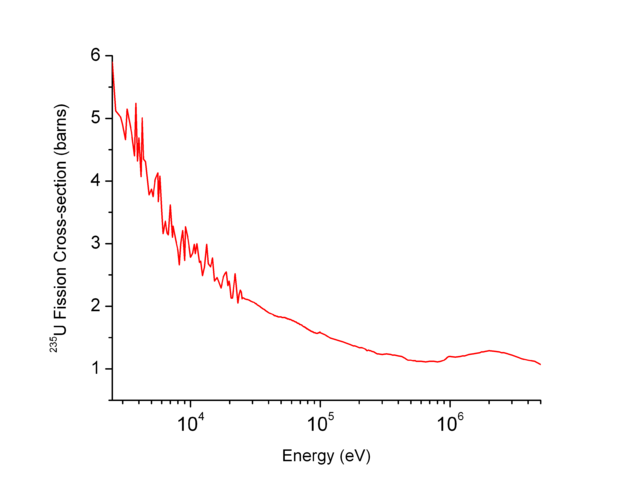 |
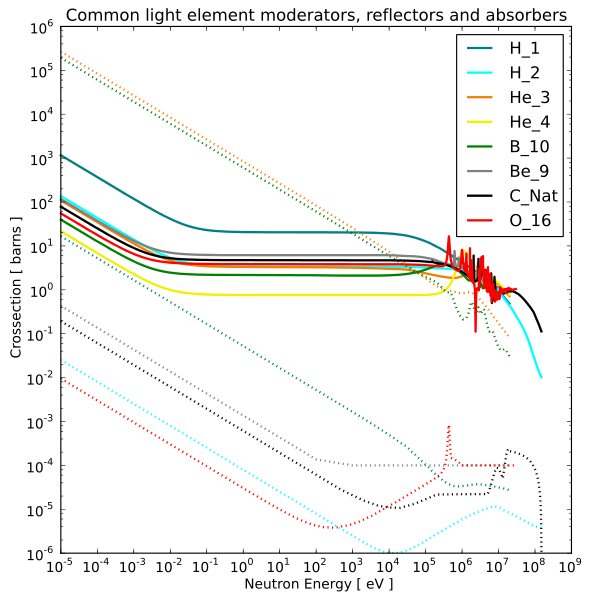 |
|---|---|
The slower the neutron, the larger the fission cross section. Fission produces 2 or 3 high-energy neutrons, or "fast" neutrons, which are then slowed down by the moderator.
The lighter the nucleus, the more effective it is in slowing down neutrons. However the lightest nucleus, the proton, is prone to capturing neutrons, hindering its effectiveness as a moderator. Deuterium rarely captures neutrons and is the best moderator.
 |
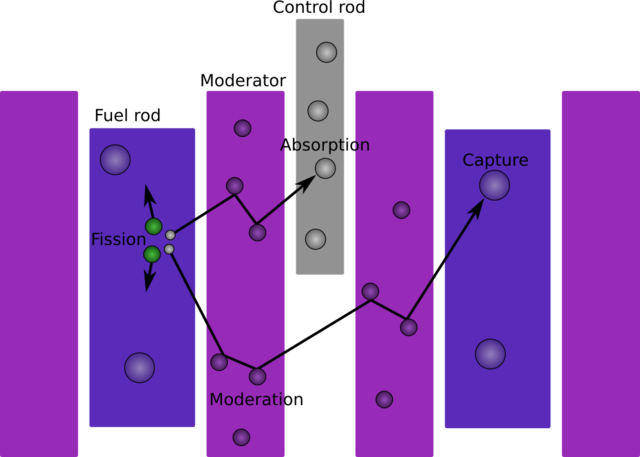 |
 |
|---|---|---|
Moderator nucleus, mass number = A Logarithmic energy loss per collision = L = 1 - ½ (A-1)2 A-1 [ln(A-1) - ln(A+1)] ~ 2/(A+⅔) Neutron scattering cross section = S Neutron capture cross section = A Slowing power = s = LS Moderating power = M = LS/A
Thermal Thermal Fast
Moderating # of neutron neutron Log energy loss Slowing Diffuse Stop neutron
power collisions scatter capture per collision power meters meters scatter
barns barns
Hydrogen 60 18 20 .333 1 20 3.94
Deuterium 10700 25 7.64 .000519 .726 5.55 2.54
Tritium 3.03 .000006
Light water 71 16 .222 .92 .028 .0051
Heavy water 5670 29 .00041
Helium 51 42 1.34 .0075
Lithium 1.37 70.5
Lithium-6 .97 940
Lithium-7 1.4 .0454
Beryllium 173 86 7.63 .0092 .208 1.59
Be2C
BeO
Boron .00086 105 5.24 767
Carbon 229 114 5 .0035 .159 .80 .56 .0275
Oxygen 2680 150 4.23 .00019 .121 .51
Fluorine 4.02 .0096
Neon .04
Sodium 3.28 .53
Lead 11.12 .171
Bismuth 9.16 .0338
Thorium 7.37
Uranium .0092 2172 7.57 .0084
Uranium-235 14 681 .0084
Uranium-238 .0092 2172 8.87 2.68 .0084
Plutonium-239 7.7 1017
Plutonium-240 1.54 290
Plutonium-241
Plutonium-242 8.2 18.5
Li2BeF4
The choices of coolant are liquid metal, liquid salt, and noble gas.
Liquid metal is a good coolant for high thermal conductivity and high density. An ideal metal coolant has a low melting point, a high boiling point, doesn't absorb neutrons, is uncorrosive, and is nonreactive with oxygen. The best choices are lead and bismuth. The metals with low melting points are:
Neutron capture Melt Boil Boil-Melt Heat Cap Oxygen Cost Weaknesses
barns K K K kJ/K/m3 immune $/kg
Bismuth .034 545 1837 1292 1170 Yes 18 Corrosive
Lead .171 601 2022 1421 1460 Yes 2
Rubidium .38 312 961 649 No 12000
Sodium .53 371 1156 785 1190 No 250
Tin .626 505 2875 2370 Yes 22 Liquid tin forms crusts that obstruct flow
Cerium .6 1068 3716 2648 No 2.5
Gallium 2.9 303 2673 2370 Yes 280
Thallium 3.43 577 1746 1169 Yes 480
Lanthanum 9.0 1193 3737 2544 No 3
Water 273 373 100 Yes
Heavy water 277 Yes
LiF .028 1118 4230 Yes
BeF2 .0095 827 2190 Yes
Li2BeF4 .020 732 4540 Yes
Lead-208 .000230 601 2022 1421 Yes High
Lithium-7 .0454 454 1603 1149 1910 No High
Cerium-140 .571 1068 3716 2648 High
Lanthanum-139 8.94 1193 3737 2544 High
For gas coolant, helium is preferred. The only 2 gases with low neutron capture and low corrosivity are helium and neon, and helium is preferred for its higher conductivity and higher heat capacity per volume.
Gas cooled reactors can have extreme temperatures. The temperature is limited only by the structural material.
Neutron capture Heat Capacity
barns kJ/K/m3
Helium .007 8.51
Neon .04
Argon .675
Nitrogen 1.91
Xenon 23.9
Krypton 25
For liquid salt coolant, the only oxidant with a low neutron capture cross section is fluorine.
Neutron capture
barns
Fluorine .0096
Chlorine 35.5
Bromine 6.8
Iodine 6.2
The best flouride salt is "Flibe", a salt of lithium, beryllium, and flourine. It has a low neutron capture cross section and a low melting point. Most flouride salts are disqualified because of their high melting point. The choices for the positive ion in the salt are:
Neutron capture Fluoride Flouride
barns Melt (K) Boil (K)
Deuterium .000519 190 293 Highly corrosive
Beryllium .0092 827 1442
Li2BeF4 .033 732 1703
Lithium-7 .0454 1118 1949
Magnesium .063 1536 2530
Aluminum .232 1560
Rubidiuim .38 1068 1681
Sodium .53 1266 1977
Potassium 2.1 1131 1775
Caesium 29 976 1524
The only fluorides with a low melting point and a high boiling point are lithium flouride and
Flibe.
A good structural material has a low neutron capture cross section, a high melting point, and a low price. The best choice is zirconium. The contenders are:
Neutron Element Carbide Cost
capture melt melt
barns K K $/kg
Beryllium .0092 827 2370 850
Zirconium .184 2128 3805 25
Platinum .96 2041 - 24000
Niobium 1.15 2750 3881 40
Ruthenium 2.56 2607 - 5600
Iron 2.56 1811 996 .3
Molybdenum 2.6 2896 2960 24
Chromium 3.1 2180 2168 2.3
Osmium 15 3306 - 12000
Tungsten 18.3 3695 3058 50
Tantalum 20.6 3290 4150 160
Hafnium 104 2506 4201 500
Diamond .0035 2800 -
Zirconium-90 .0107 2128 3805
Molybdenum-92 .0614 2896 2960
Ruthenium-104 .31 2607 -
Platinum-196 .72 -
Tungsten-184 1.70 3695 3103
Osmium-192 3.12 3306 -
Hafnium-180 12.92 2506 4201
A control rod should have a large neutron capture cross section and a large melting point (unless it's a gas). The contenders are:
Neutron capture Melt
barns K
Gadolinium 49000 1585
Samarium 5922 1345
Europium 4600 1099
Cadmium 2450 594
Dysprosium 920 1680
Boron 767 2349
Iridium 425 2719
Mercury 374 234
Krypton 25 116
Xenon 23.9 161
Argon .68 84
Neon .04 25
Gadolinium-157 250000 1585
Gadolinium-155 61000 1585
Samarium-149 42080 1345
Cadmium-113 20600 594
Europium-151 9100 1099
Dysprosium-164 2840 1680
A gas such as krypton has the potential for fast action. The reactor can be kept under vacuum and then if krypton is released, it swiftly fills the reactor.
For the fission fuel, use Californium-251 for its high neutron capture cross section and high neutrons per fission.
Neutron capture Melt Boil
barns K K
Moderator: ZrD4
Be2C 2370
BeO 3010
Be 1560
Diamond
Coolant: Lead-208 .000230 601 2022
Li2BeF4 .020 732 4540
Structure: Molybdenum-92 .0614 2896 2960
Zirconium-90 carbide .0107 3805 -
Diamond .0035 2800 -
Control rod: Gadolinium-157 250000 1585
Iridium-191 954 2719
Krypton-83 185 116
Fission fuel: Californium-252 33 2.64 Neutrons/fission=3.76 4.30
Californiuim-251 4801 900 Neutrons/fission=4.1 4.56
Einsteinium-254 2900 .75 Neutrons/fission=4.2
Americium-242m 6686 141 Neutrons/fission=3.26 3.53
Californium-254 2.00 .166 Neutrons/fission=3.85
Fermium-255 3360 Neutrons/fission=4
Einsteinium-253 2.51 Neutrons/fission=4.7
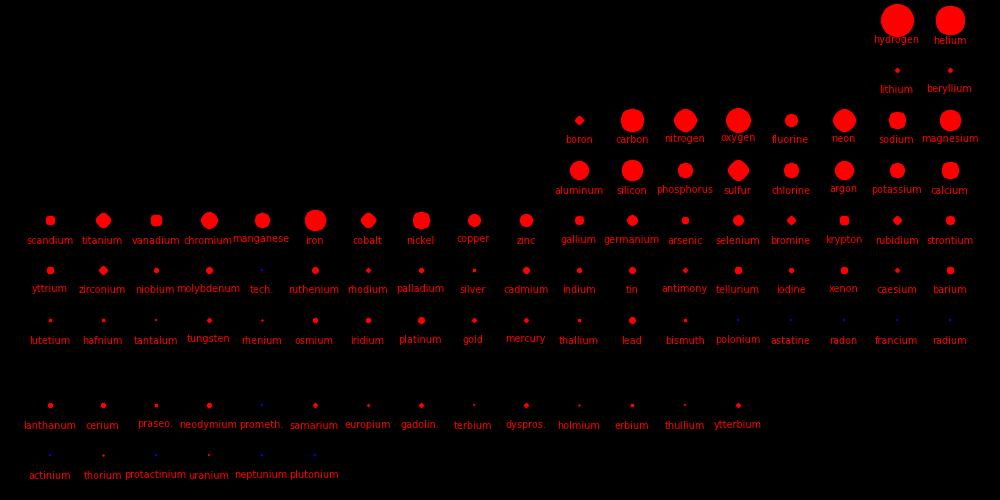 |
|---|
Blue elements are unstable with a half life much less than the age of the solar system.
The only elements heavier than Bismuth that can be found on the Earth are Thorium and Uranium, and these are the only elements that can be tapped for fission energy.
Natural Thorium is 100% Thorium-232
Natural Uranium is .72% Uranium-235 and 99.3% Uranium-238.
Plutonium doesn't exist in nature.
Protons Neutrons Halflife Critical Isotope
(106 yr) fraction
Thorium-232 90 142 14000 - 1.00 Absorbs neutron -> U-233
Uranium-233 92 141 .160 16 - Fission chain reaction
Uranium-235 92 143 700 52 .0072 Fission chain reaction
Uranium-238 92 146 4500 - .9927 Absorbs neutron -> Pu-239
Plutonium-238 94 144 .000088 - - Produces power from radioactive heat
Plutonium-239 94 145 .020 10 - Fission chain reaction
The elements that can be used for fission energy are the ones with a critical
mass: Uranium-233, Uranium-235, and Plutonium-239.
Uranium-233 and Plutonium-239 can be created in a breeder reactor.
Thorium-232 + Neutron -> Uranium-233 Uranium-238 + Neutron -> Plutonium-239The "Fission" simulation at phet.colorado.edu illustrates the concept of a chain reaction.
Natural uranium is composed of .7% Uranium-235 and the rest is Uranium-238. Uranium-235 can be separated from U-238 using centrifuges, calutrons, or gas diffusion chambers. Uranium-235 is easy to detonate. A cannon and gunpowder gets it done.
Plutonium-239 is difficult to detonate, requiring a perfect spherical implosion. This technology is beyond the reach of most rogue states.
Uranium-233 cannot be used for a bomb and is hence not a proliferation risk.
Plutonium-238 emits alpha particles, which can power a radioisotope thermoelectric generator (RTG). RTGs based on Plutonium-238 generate 540 Watts/kg and are used to power spacecraft.
The fission of uranium-233, uranium-235, and plutonium-239 yields similar energies. The "reactor heat" column is the energy yield per nucleus in a reactor. Energies in MeV:
Fission Prompt Prompt Prompt Decay Decay Anti- Reactor
fragments neutrons gammas neutron betas gammas neutrinos heat
capture
Uranium-233 168.2 4.9 7.7 9.1 5.2 5.0 6.9 200.1
Uranium-235 169.1 4.8 7.0 8.8 6.5 6.3 8.8 202.5
Plutonium-239 175.8 5.9 7.8 11.5 5.3 5.2 7.1 211.5
Creating Plutonium-239 and Uranium-233:
Uranium-238 + Neutron -> Plutonium-239 Thorium-232 + Neutron -> Uranium-233 Detail: Uranium-238 + Neutron -> Uranium-239 Uranium-239 -> Neptunium-239 + Electron + Antineutrino Halflife = 23 mins Neptunium-239 -> Plutonium-239 + Electron + Antineutrino Halflife = 2.4 days Thorium-232 + Neutron -> Thorium-233 Thorium-233 -> Protactinium-233 + Electron + Antineutrino Halflife = 22 mins Protactinium-233 -> Uranium-233 + Electron + Antineutrino Halflife =
The goal is to maximize the number density of hydrogen atoms, and the molecule that achieves this is TaH5.
Density = D =15100 kg/meter3 Hydrogen number = N = 5 Hydrogen mass = m = 1 AMU = 1.66⋅10-27 kg Molecule mass = M = 182 AMU = 3.02⋅10-25 kg Hydrogen number density= n = ND/M = 2.50⋅1029 atoms/meter3 Hydrogen mass density = d = NDm/M= 415 kg/meter3
For various molecules containing hydrogen,
H mass Density Melt Boil Mass Heat capacity
density kg/meter3 K K AMU
TaH5 415 15100 ? 182
B2H6 247 1131 108.3 180.7 27.67
ZrH4 220 ~5200 ? 95.3
AlH3 149 1477 378d 30.0 40.2 mol
UH3 137 10950 773d 241.1
HfH2 127 11400 673 180.5
NbH5 97.9
ZrH2 120 5560 93.2
BeH2 119 650 523d 11.03 30.12 mol
H2O 112 1000 273 373 18.016
MgH2 111 1450 26.32 35.4 mol
C3H8 110 600 85.5 231.1
C2H6 110 545 90.4 184.6
CH4 107 423 90.7 111.7
C4H10 104 600 136 274
LiH 99 780 962 1270 7.95 3510
LiAlH4 97 917 423d 37.95 86.4 mol
B5H9 89 618 226.3 333.2 63.12
Liquid H2 70 70 14.0 20.3 2.016 28.8 mol
ZrH 64 5900 92.2
TiH2 3760 623 49.88
Ge2H6 164 304 151.3
AlLi3H6 53.85
PuH2 246
K2ReH9 273.5 Potassium nonahydridorhenate
PuH3
A fission reactor can be surrounded by neutron shield that captures all
neutrons, so that they don't escape to the environment. Neutrons can make
materials radioactive. The shield should consist of an element with the
following properties:
Large neutron capture cross section
Cheap
No radioactive isotopes should be produced after neutron capture.
Among the elements that cost less than 20 $/kg, the neutron absorption cross sections are:
Neutron capture Cost Quality
barns $/kg barns/$
Gadolinium 49000 29 2450 Europium-154 8.59 Fraction=.0020
Cadmium 2450 2.7 1220 Caesium-134 2.06
Samarium 5922 13.6 740 Problems
Boron 767 3.7 183 Carbon-14 5730
Chlorine 35.5 1.5 24 Chlorine-36
Europium 4600 287 15
Dysprosium 920 390 11.5
Iron 2.56 .13 8.5 Cobalt-60
Manganese 13.3 2.2 5.8 Cobalt-60
Neodymium 49 96 1.96
Copper 3.78 7 .61 Krypton-85
Titanium 6.09 17 .61 Cobalt-60
Vanadium 5.08 28 .42 Cobalt-60
Iodine 6.2 35 .39
Tungsten 18.3 32 .37
Lithium 70.5 70 .35
Indium 194 180 .26
Erbium 160 26 .03
Mercury 374 50 23
Thallium 3.43 4200
Lead .171 2.1 .086
Nickel 4.49 15 Nickel-59
Chromium 3.1 2.3 Cobalt-60
Molybdenum 2.6 24
Potassium 2.1
Nitrogen 1.91
Zinc 1.11 2
Sodium .53
Sulfur .53 Chlorine-36
Calcium .43
Hydrogen .333
Aluminum .232 1.7
Silicon .171
Fluorine .0096
Magnesium .063
Carbon .0035
Oxygen .00019
The stopping length of a neutron in Americium-242m is:
Cross section = A = 6686 barns Atomic mass unit = m = 1.660e-27 kg Nucleons = q = 242 Nucleus mass = M = m q = 4.02e-25 kg Density = D = 12000 kg/meter3 Atom density = N = D/M = 2.99e28 atoms/meter3 Neutron stopping length = X = 1/(AN) = 5.00e-5 meters Atoms/Area = n = NX = 1.50e24 atoms/meter2 Mass/Area = H = M n = .6 kg/meter2
The only way to exceed reactor flux is with spallation. An accelerator fires high-energy protons at a target with heavy nuclei, and the proton ejects neutrons from the nuclei.
Spallation e17 Reactor e15 R process e32 HFIR 4e14 S process e11 Californium-252 e9 Alpha-Beryllium e8 Fusor e5 .3 Mn/s Light ion accelerator
Proton energy per neutron = 50 MeV/neutron
Neutron capture cross section = A = 1 barn = e-28 meter2 Neutron flux = F = e22 neutrons/meter2/s Neutron capture rate = R = AF = e-6 neutrons/second = 32 neutrons/year
Neutron capture cross section = A = 1.e-28 meter2 = 1 barn Tungsten atom mass = M =3.053e-25 kg Tungsten density = D = 19300 kg/meter3 Tungsten number density = n = D/M = 6.3e28 atoms/meter3 Neutron path length = L = (nA)-1 = .159 meters
The neutron capture cross section increases with decreasing neutron temperature.
Room temperature = T = 300 Kelvin Cold neutron temperature = t = .005 Kelvin Cross section amplification = Q = (T/t) = 245
Neutron mass = M =1.675e-27 kg Energy per neutron = E = 50 MeV = 8.0e-12 Joule Energy cost = e = 40 MJoule/$ Neutron cost/mass = C = 120 M$/kg
barn second
Tungsten-181 < 1
Tungsten-188 .00270 > 2
Osmium-194 3.12 .00343 > 2
Helium-3
Hafnium-172 < 2
Tantalum-179 < 1
Energy per proton = e = .8 GeV/proton = 1.28e-10 Joules/proton Current = I = .0002 Coulombs/second Proton charge = q = 1.602e-19 Coulombs Protons per time = R = 1.25e15 Protons/second Power = P = Q = Re = .16 MWatts
The neutron yield for a 1 GeV proton is:
Neutrons/Proton
Aluminum 2.2
Iron 4.1
Zirconium 6.3
Lead 11.9
Tantalum 12.7
Tungsten 13.1
Thorium 18
Uranium-238 21.4
Nucleus mass number = M = 184 Proton energy = E = 1 GeV Neutron yield = .10 * (A+20) (E-.12) = 18
Energy (GeV)
Secondary protons 212
Primary protons 194
Neutrons 26
Neutral pions 40
Charged pions 15
Heavy particles 15 More than one nucleon
Gammas 13
Muons 3.6
Melting points for oxides, carbides, nitrides, and borides:
Element Oxide Carbide Nitride Boride Hydride Fluoride Heat cap
Kelvin Kelvin Kelvin Kelvin Kelvin Kelvin Kelvin KJoules/kg
Hydrogen - 14.30
Helium 5.19
Lithium 454 1711 823 3.58
Beryllium 1560 2780 2370 2470 523 1.82
Boron 2349 723 3036 3246 108
Carbon 3800 - .709
Oxygen - 273
Sodium 371 1.23
Lead .129
Magnesium 923 3125 ? 1100 600 1.02
Aluminum 933 2345 1770 423 .897
Silicon 1687 1986 3100 88
Sulfur 222
Scandium 1814 unstable
Titanium 1941 2116 3430 3200 3500 623
Vanadium 2183 963 3080 2320 2723*
Chromium 2180 2708 2168 2443*
Manganese
Iron 1811 996 1570
Cobalt 1768 2206 1733*
Nickel 1728 1398*
Copper 1358
Zinc unstable
Selenium 239
Strontium 1050 2804 1470 2508
Zirconium 2128 2988 3805 3225 3323* 1070
Niobium 2750 2188 3881 2846 3323* NbO2
Molybdenum 2896 1370 2960 2643* 291
Technetium 2430 393 311
Ruthenium 2607 1470 exist 327
Rhodium 2237 1370 343
Palladium 1828
Silver 1234
Cadmium 594
Tin unstable
Tellurium 234
Xenon 224
Caesium 302 763
Lanthanum 2480
Gadolinium 1585 2690
Samarium 1345 2608
Lutetium 1925 3675
Hafnium 2506 4230 3520
Tantalum 3290 2145 4150 3360 3373
Tungsten 3695 1970 3103 exist 2943 276
Rhenium 3459 1273 dne 2670 292
Osmium 3306 773 future dne exist 307
Iridium 2719 1370 317
Platinum 2041 335
Lead unstable .129
Bismuth unstable
Radium 973
Element Oxide Carbide Nitride Boride Hydride Fluoride Heat cap
Kelvin Kelvin Kelvin Kelvin Kelvin Kelvin Kelvin KJoules/kg
Actinium 3471
Thorium 5061
Protactinium 4300
Uranium 1405 3138 2620 1170 2700 337 4404
Neptunium 328 4273
Plutonium 912 3017 325 3505
Americium 1449 2478 2880
Curium 1613 1992 3383
Californium 1173 2023 1743
Einsteinium 1133 1269
Fermium 1800
Diamond
Quartz
Graphite
Corundum 2317
Lead unstable .129 1.46 11.34
Element Oxide Carbide Nitride Boride Hydride Fluoride Heat cap Heat cap Density Boil
Kelvin Kelvin Kelvin Kelvin Kelvin Kelvin Kelvin KJoules/kg KJoules/litre gram/cm3
Melt Boil Density
Kelvin Kelvin g/cm3
HfCN 4400 HfCN
TaHf carbide 4263 14.8 Ta4HfC5
Hafnium carbide 4201 12.2 HfC
Tantalum carbide 4150 ~15 TaC
Niobium carbide 3881 7.82 NbC
Zirconium carbide 3805 5370 6.73 ZrC
Carbon (graphite) 3800 2.15
Tungsten 3695 6203 19.2
Hafnium diboride 3520 10.5 HfB2
Zirconium diboride 3519 6.08 ZrB2
Titanium diboride 3500 4.52 TiB2
Rhenium 3459 21.0
Titanium carbide 3430 5090 4.93 TiC
Tantalum diboride 3373 TaB2
Tantalum nitride 3360 14.3 TaN
Osmium 3306 5285 22.6
Tantalum 3290 16.7
Boron nitride 3246 2.1 BN
Titanium nitride 3200 5.22 TiN
Uranium oxide 3138 10.97 UO2
Magnesium oxide 3125 3870 3.6 MgO
Tungsten carbide 3103 6270 15.6 WC
Silicon carbide 3100 3.16 SiC
Vanadium carbide 3080 5.77 VC
Boron carbide 3036 3770 2.52 B4C
Plutonium oxide 3017 3070 11.5 PuO2
Molybdenum carbide 2960 8.90 MoC
Tungsten boride 2943 W2B
Tungsten boride 2928 WB
Molybdenum 2896 10.3
Strontium oxide 2804 3470 4.70 SrO
Beryllium oxide 2780 4170 3.01 BeO
Niobium 2750 8.57
Iridium 2719 22.6
Uranium diboride 2700 12.7 UB2
Uranium carbide 2620 13.63 UC
Ruthenium 2607 12.4
Strontium hexaboride2508 3.39 SrB6
Hafnium 2506 13.3
Lanthanum hexaboride2480 4.72 LaB6
Beryllium nitride 2470 2510 2.71 Be3N2
Technetium 2430 11
Beryllium carbide 2370 1.9 Be2C
Boron 2349 2.34
Aluminum oxide 2345 3250 3.99 Al2O3
Vanadium nitride 2320 6.13 VN
Sapphire 2300 4.0 Al2O3
Rhodium 2237 12.4
Vanadium 2183 6.0
Chromium 2180 7.15
Chromium carbide 2168 4070 6.68 Cr3C2
Tantalum oxide 2145 8.13 Ta2O5
Zirconium 2128 6.52
Cobalt oxide 2206 6.44 CoO
Titanium oxide 2116 3245 4.23 TiO2
Quartz 1986 2.65 SiO2
Tungsten oxide 1970 10.8 WO2
Titanium 1941 4.51
Palladium 1828 12.0
Scandium 1814 2.98
Iron 1811 7.86
Aluminum carbide 1770 2.93 Al4C3
Cobalt 1768 3200 8.90
Nickel 1728 8.91
Lithium oxide 1711 2870 2.01 Li2O
Silicon 1687 2.33
Curium 1613 3383 13.5
Iron boride 1570 7.15 FeB
Beryllium 1560 1.85
Americium 1449 2880 12
Uranium 1405 4404 19.0
Molybdenum dioxide 1370 6.47
Copper 1358 8.96
Silver 1234 10.5
Californium 1173 1743 15.1
Uranium nitride 1170 11.3 UN
Magnesium diboride 1100 2.57 MgB2
Strontium 1050 1650 2.64
Iron carbide 996 Fe3C
Radium 973 2010 5.5
Aluminum 933 2.70
Magnesium 923 1.74
Plutonium 912 3505 19.82
Polonium 527 1235 9.3
Lithium carbide 823 1.3 Li2C2
Caesium oxide 763 4.65 Cs2O
Cadmium 594 8.65
Lithium 454 .53
Sodium 371 .97
Caesium 302 944 1.93
Tantalum hydride 15.1 TaH
Hafnium hydride 11.4 HfH2
Zirconium hydride 1070 5.6 ZrH2
Power/Mass Half life Decay Melt Decay Side Distance Potholes
Watt/kg year MeV mode
Rhenium-184 .104 5869 e+ < 1
Tungsten-188 .191 .349 3695 3695 6203 Metal e- > 2
Hafnium-181 .116 2506 4201 4876 Carbide e- > 1
Hafnium-175 .192 2506 4201 4876 Carbide e+ > 1
Osmium-185 .256 EC > 1
Tungsten-181 9546 .332 .1877 3695 3695 6203 Metal EC
Rhenium-184m .463 .188 IT or e+ < 1
Rhodium-102 67003 .567 1.268 2237 3968 e+ or e-
Ruthenium-106 1116 1.018 .0394 2607 4423 e-
Tantalum-179 991 1.82 .1056 3290 4150 5731 Carbide EC < 1
Hafnium-172 3210 1.87 .338 2506 4201 4876 Carbide EC < 2
Rhodium-101 4967 3.3 .542 2237 3968 EC < 2
Osmium-194 6.02 2.33 3306 5285 e- > 2 pothole 30.1 hours
Niobium-93m 16.13 .03077 2750 3881 5017 Carbide Gamma = 0
Hafnium-178m2 1401 31 2.446 2506 4201 4876 Carbide Gamma = 0
Platinum-193 50 .0568 EC > 1
Uranium-232 1035 68.9 5.414 1405 3138 4404 Oxide Alpha
Niobium-91 680 2750 3881 5017 Carbide < 2
Plutonium-238 818 87.7 5.59 912 3017 3505 Oxide Alpha
Plutonium-241 4315 14.4 4.90 912 3017 3505 Oxide Alpha
Curium-243 2666 29.1 6.169 1613 1992 3383 Oxide Alpha
Curium-244 4014 18.1 5.80 1613 1992 3383 Oxide Alpha
Curium-250 241 8300 5.17 1613 1992 3383 Oxide SF or Alpha
Cobalt-60 27300 5.27 2.82 1768 2206 3200 Oxide e-, Gamma
Beryllium-7 .146 2742 EC < 2
Californium-252 58470 2.64 6.12 1173 2023 1743 Oxide Alpha or SF
Californium-250 5779 13.1 6.02 1173 2023 1743 Oxide Alpha or SF
Beryllium-7 2577000 .146 .862 1560 2780 2742 Oxide EC
Titanium-44 295 63 .268 1941 3430 3560 Carbide EC
Titanium-60 60.0 EC <
Niobium-93m 16.13 .03077 IT > 0
Ruthenium-106 1.023 e- > 2 105 is 4.44 hours
Rhodium-102 .567 e+ or e-
Rhodium-102m 3.742 .1408 e+
Vanadium-49 .901 EC <
Zirconium-95 .175 > 1
Lutetium-173 1.37 EC <
Iridium-192 .202 e- or EC > 1
Lutetium-174 3.31 3675 e+ < 1
Lutetium-174m1 .389 .171 3675 IT < 1
Lutetium-177 .0182 e- > 1
Lutetium-177m3 .439 .970 e- or IT > 1
Melt Neutron capture
Kelvin barn
Ta Hf carbide 4263 60
Hafnium carbide 4201 104
Tantalum carbide 4150 20
Niobium carbide 3881 1.15
Zirconium carbide 3805 .184
Diamond 3800 .0035
Tungsten 3695 18.3
Rhenium 3459 89.7
Osmium 3306 15
Tantalum 3290 20.6
Tungsten carbide 3103 18.3
Iridium 2719 425
Hafnium 2506 104
Molybdenum 2896 2.6
Niobium 2750 1.15
Ruthenium 2607 2.56
Technetium 2430 20
Rhodium 2237 145
Vanadium 2183 5.08
Chromium 2180 3.1
Zirconium 2128 .184
Platinum 2041 .96
Titanium 1941 6.09
Lutetium 1925 84
Palladium 1828
Fermium 1800
Curium 1613
Americium 1449
Uranium 1405
Californium 1173
Einsteinium 1133
Plutonium 912
 |
|---|